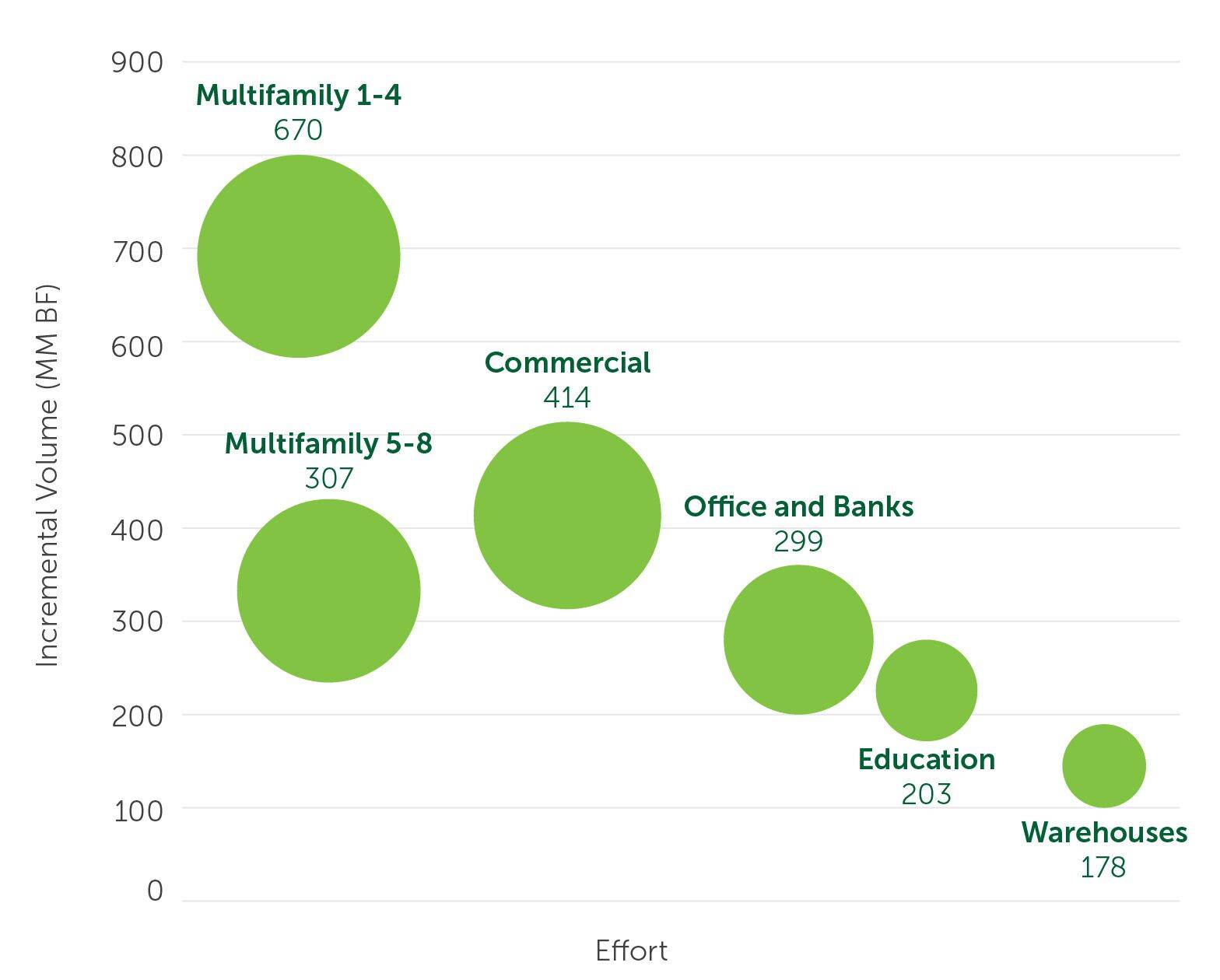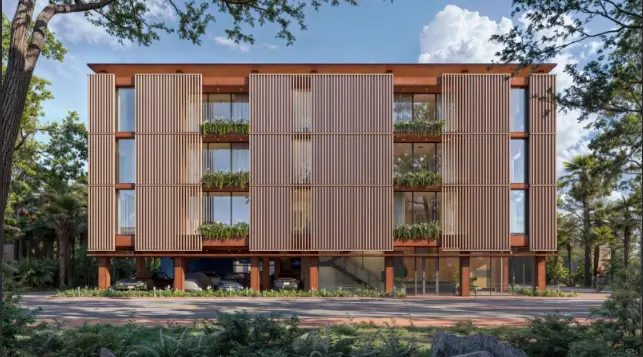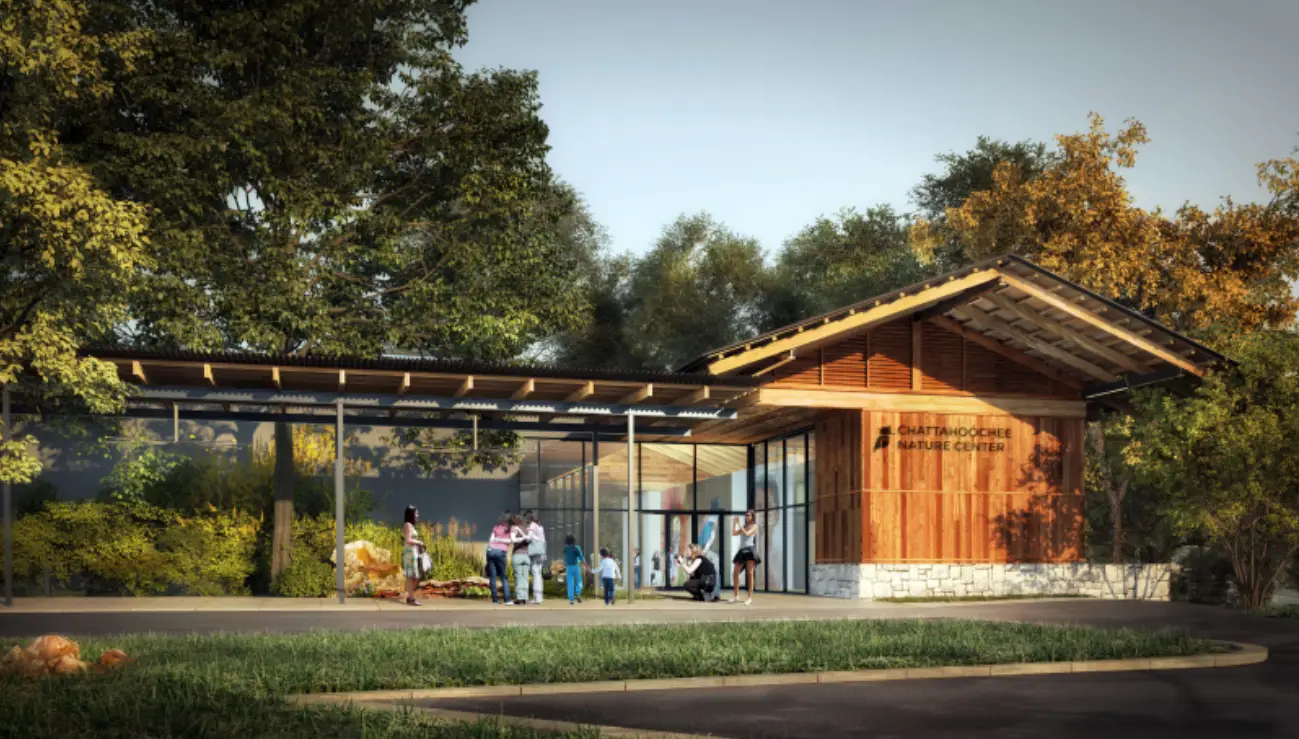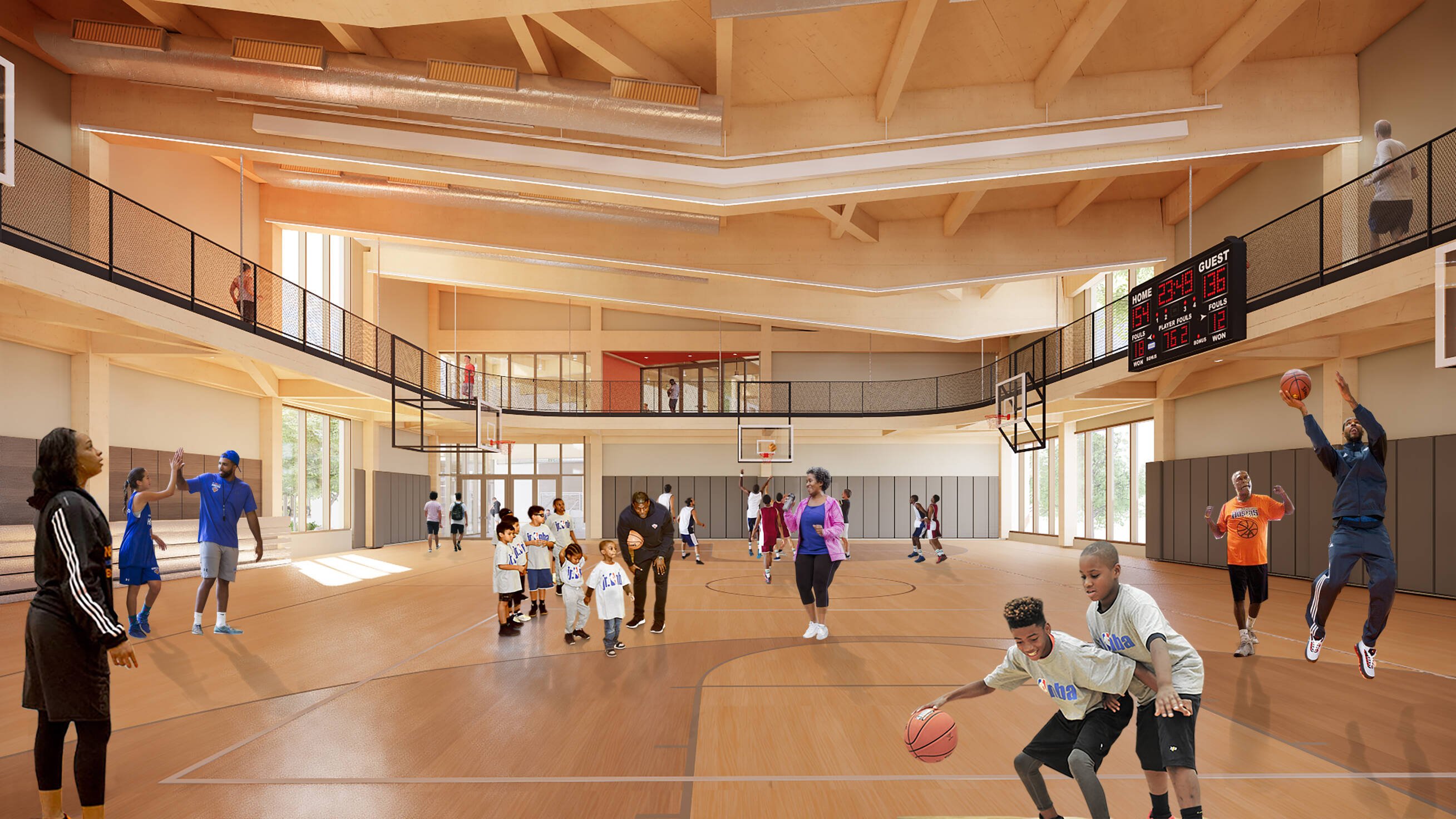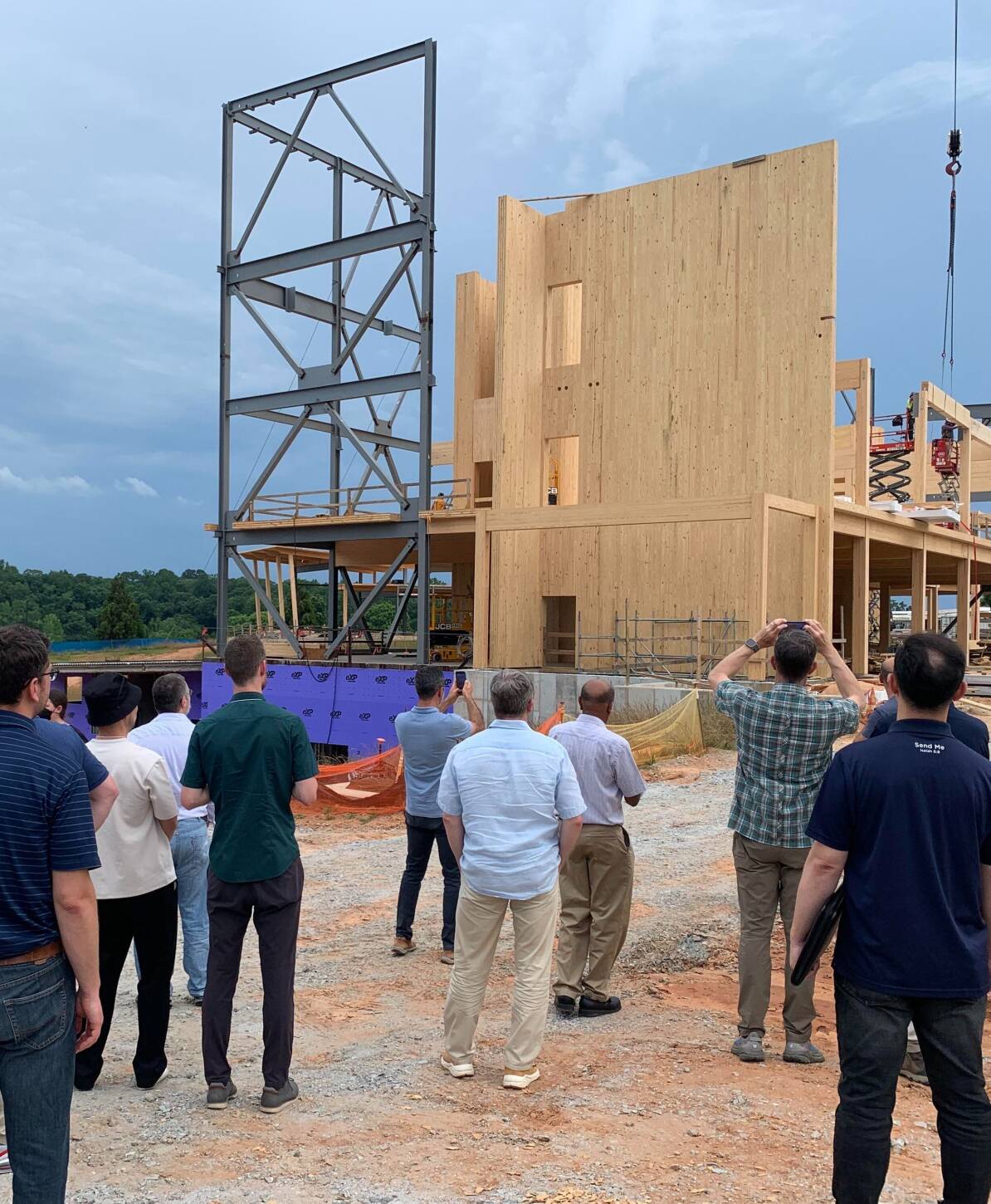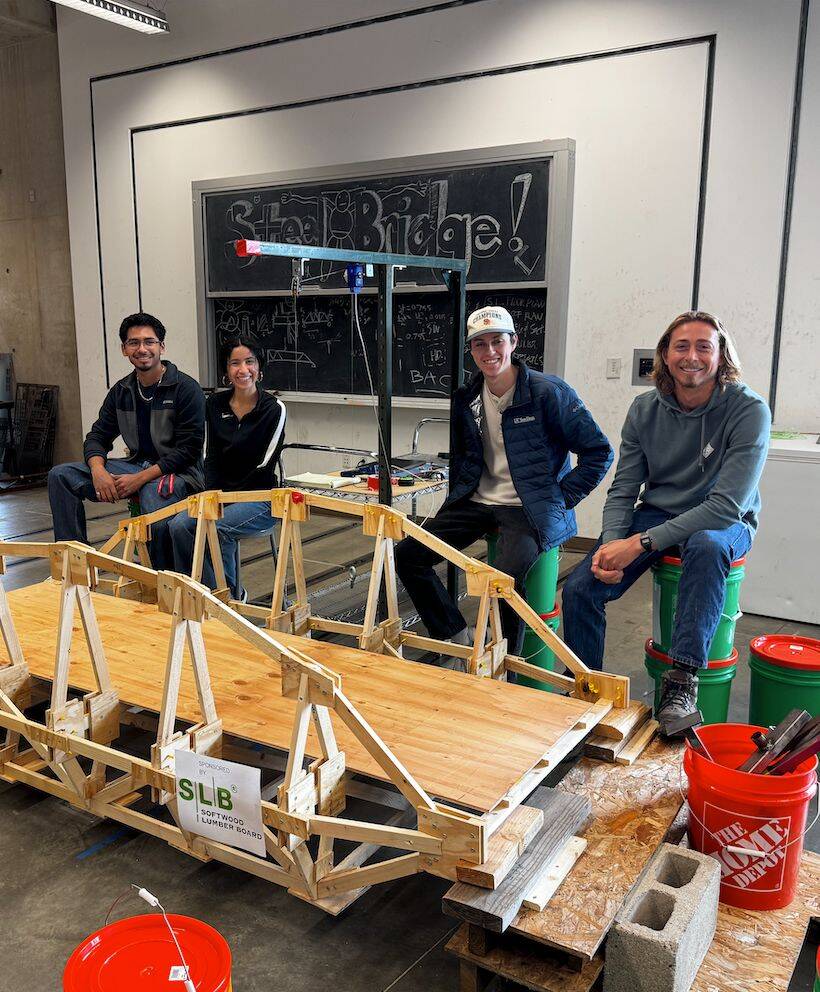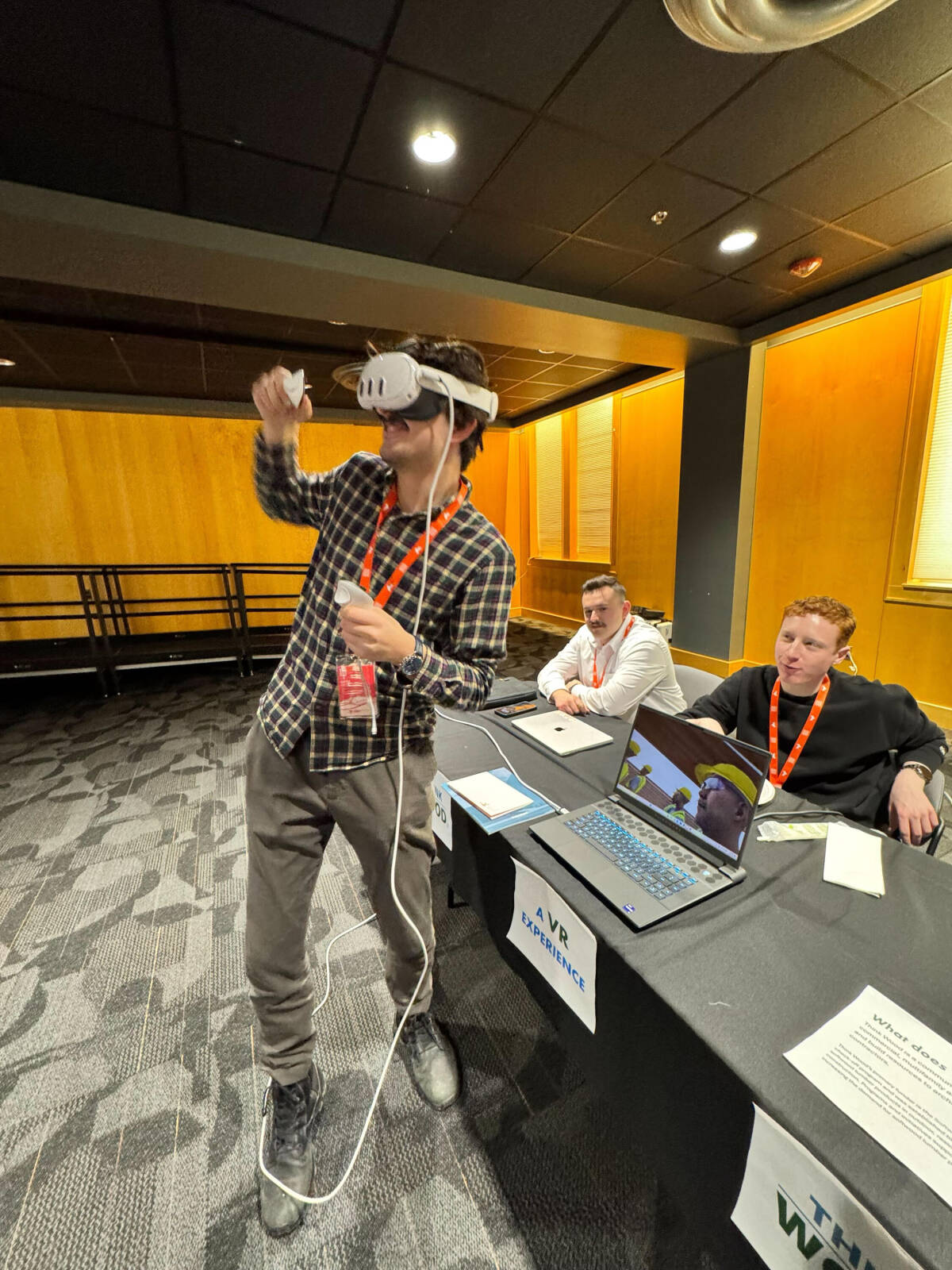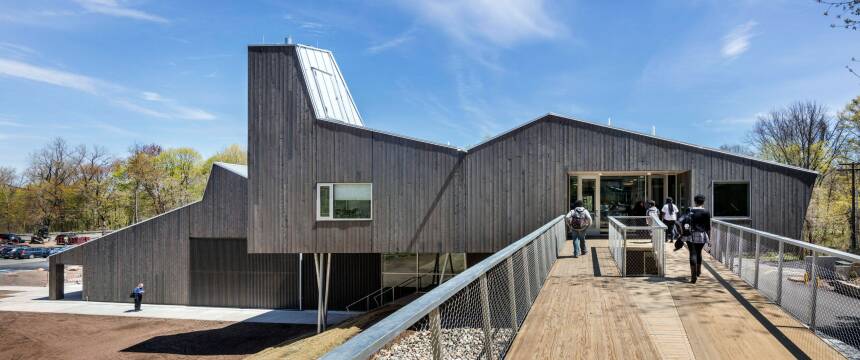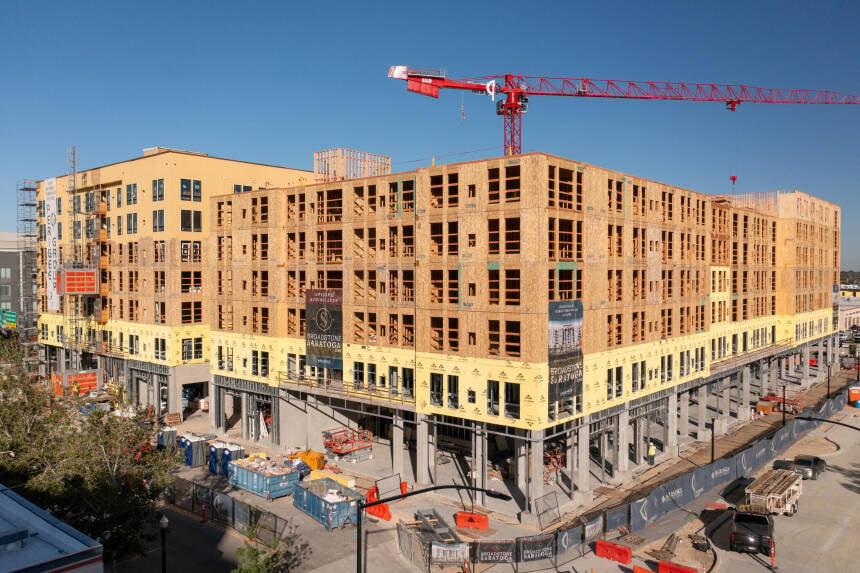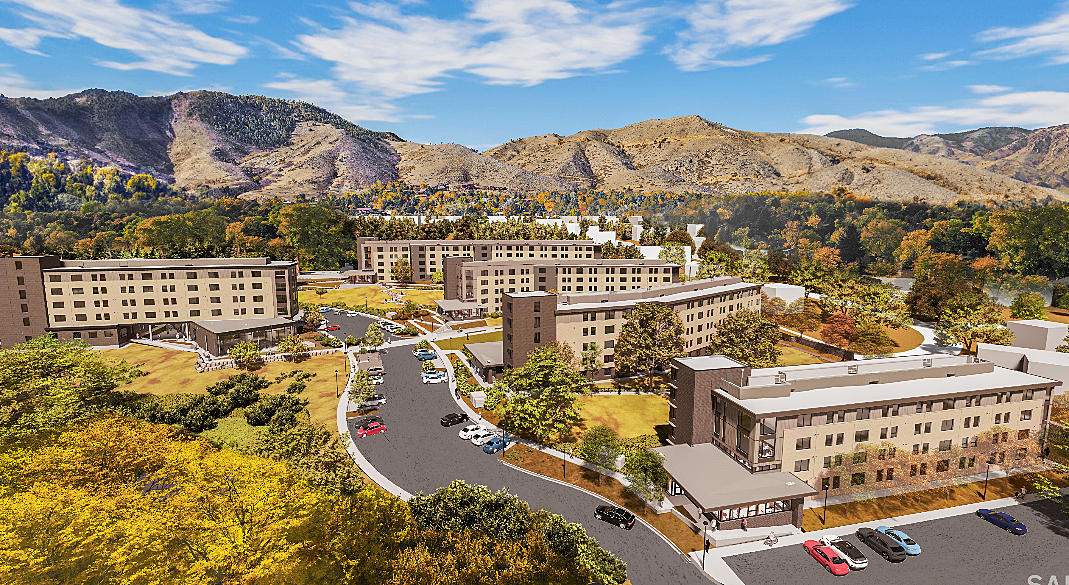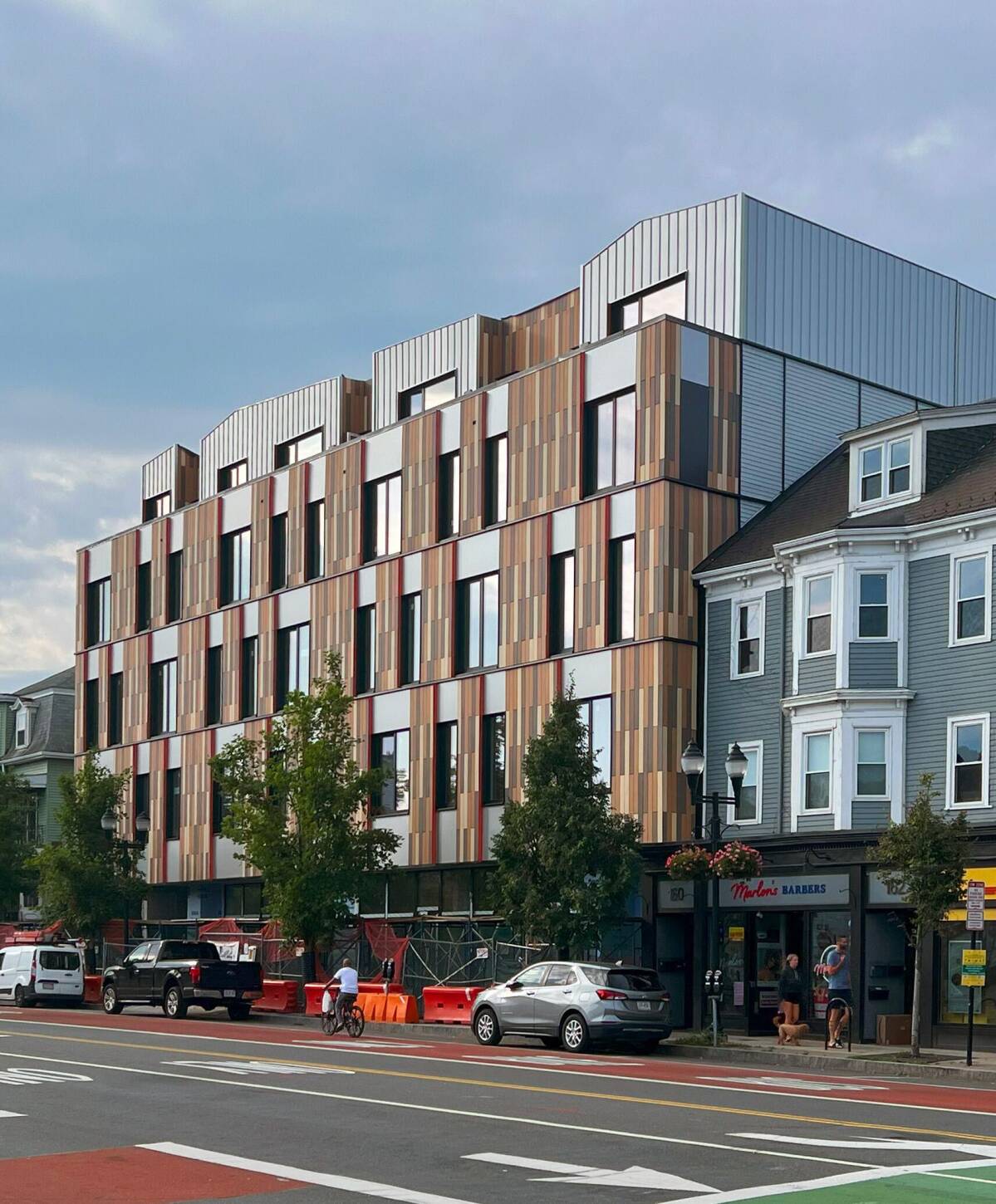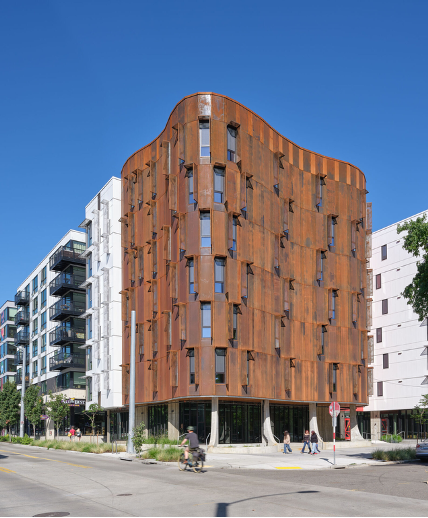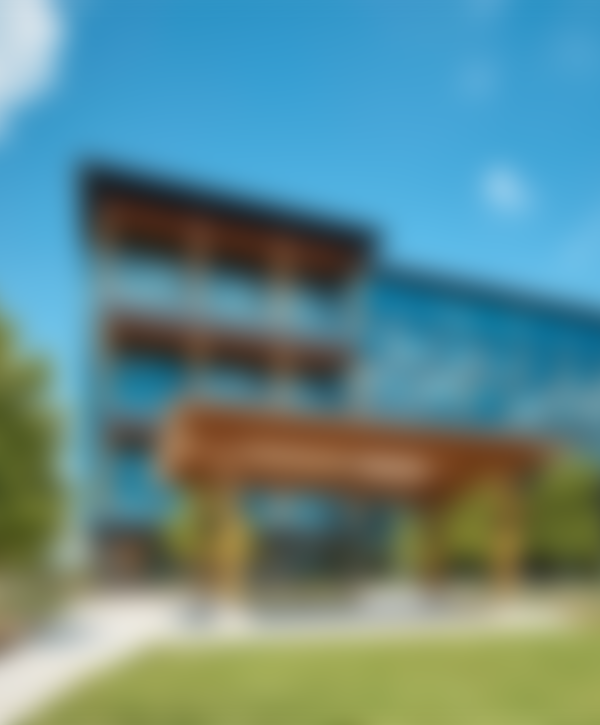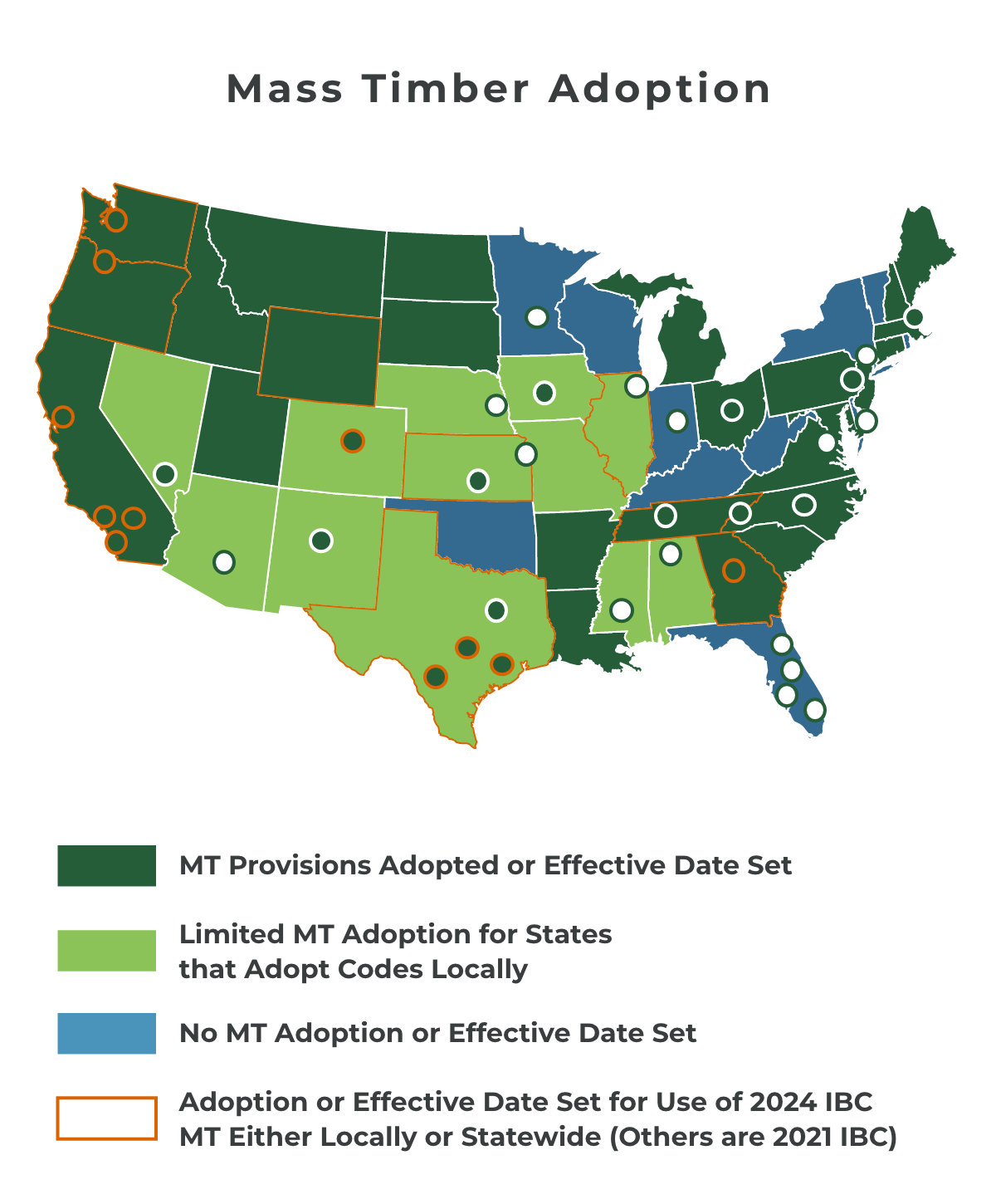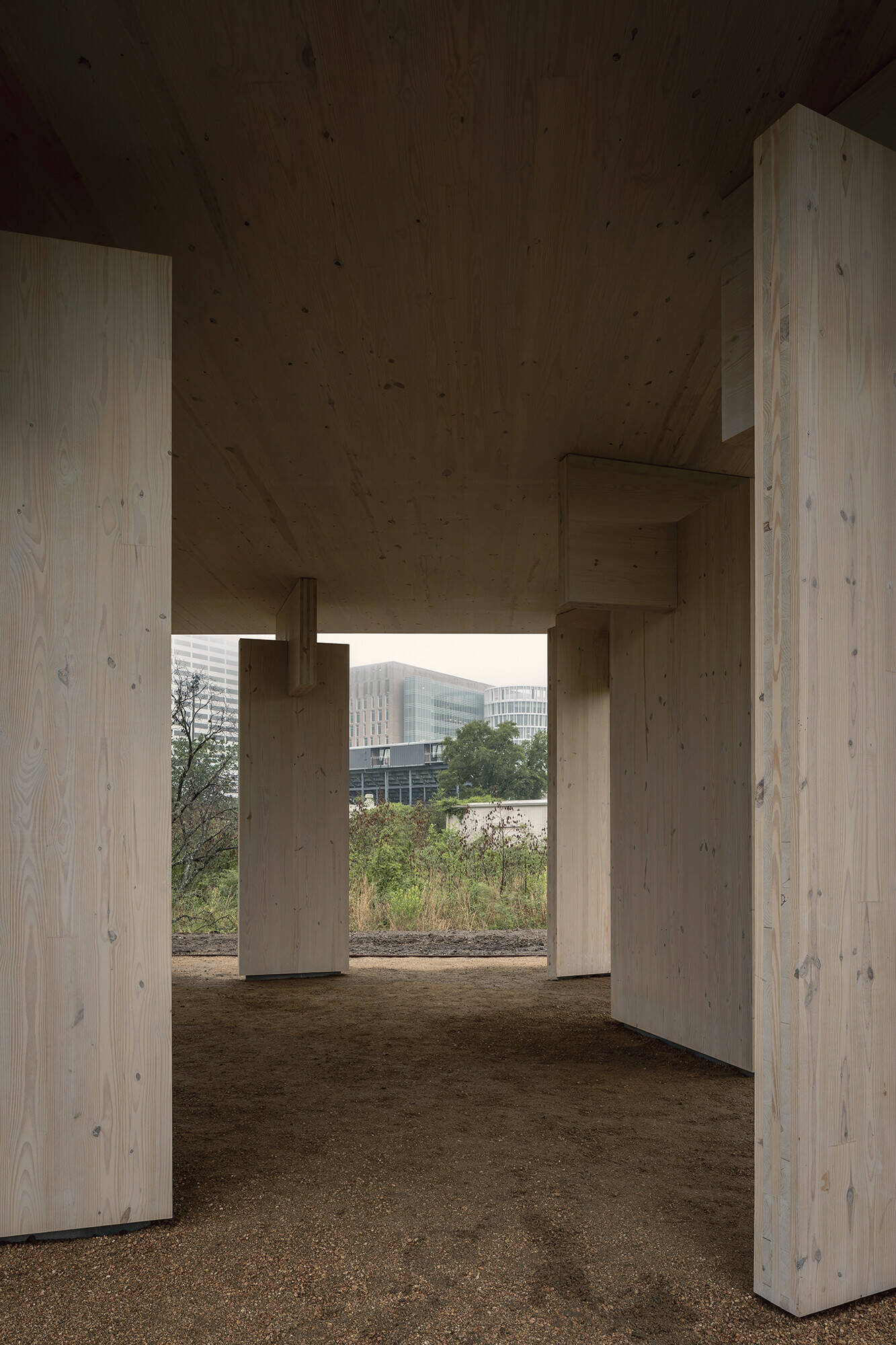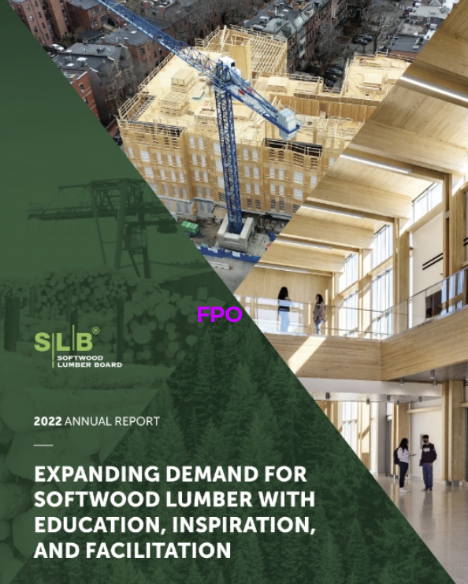DOWNLOADS
DOWNLOADS

EDUCATION
HIGHLIGHTS
WOODWORKS
HIGHLIGHTS
THINK WOOD
HIGHLIGHTS
AWC
HIGHLIGHTS
Q2 HIGHLIGHTS
SLB
Feature Story


Q2 HIGHLIGHTS
SF
1,070,000
the 1,510 MM BF
2025 goal.



Building Segment Priorities
178
Warehouse
203
Education
299
Office
& Banks
414
Commercial
307
Multifamily 5-8
670
Multifamily 1-4
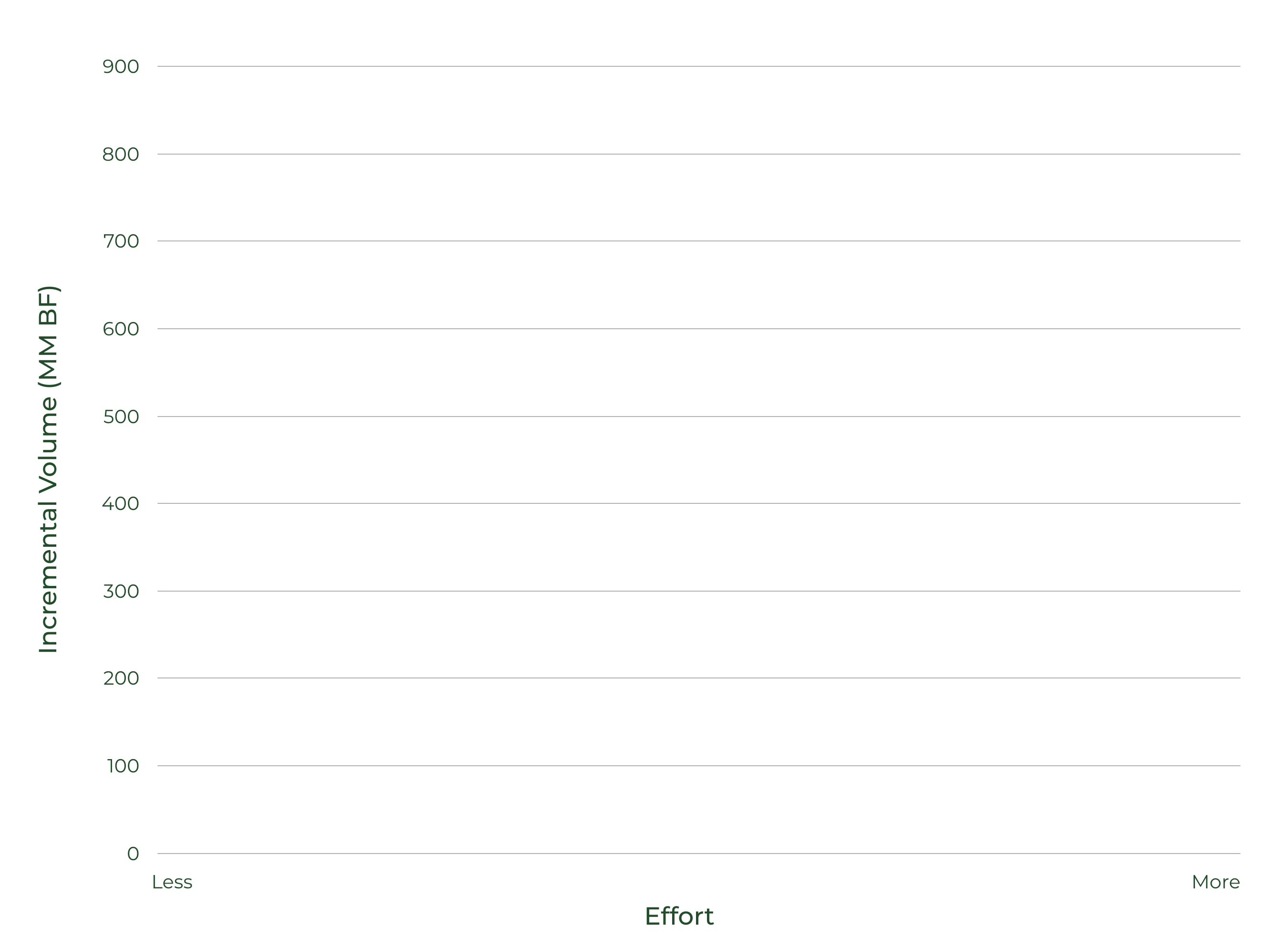
Since 2012, the SLB has helped generate more than 16 billion board feet (BBF) of incremental lumber demand, returning 86 board feet for every dollar invested. Analysis shows that without the SLB’s efforts, softwood lumber use in the U.S. would have been 3.5% lower.
Now, with diversification in broader construction markets and growing demand for environmentally responsible building materials, the SLB has outlined a focused strategy to add 2.9 BBF in new annual lumber demand by 2035. The approach builds on existing momentum in key,
high-growth market segments—multifamily, affordable housing, education, offices, and warehouses—where lumber offers strong economic and environmental value propositions.
The SLB’s plan sets realistic growth targets in market share within segments where gains are achievable at the current level of investment. The focus is on execution: maintaining what works, adapting to new opportunities, and delivering measurable demand growth.
At the same time, the SLB’s strategy recognizes and addresses intensifying competition from other building materials, whose campaigns are challenging lumber’s benefits and seeking to influence upcoming building code cycles. The SLB’s funded programs—including WoodWorks, the AWC, Think Wood, and SLB Education—are responding with coordinated efforts to strengthen technical support, defend and accelerate adoption of building codes, and improve awareness of wood’s environmental, economic, and performance advantages.
In a contested materials landscape, the SLB’s next-phase strategy presents
a clear and data-driven path to sustained market protection, diversification, and growth.
Projects such as the eight-story 1430 Q in Sacramento show that
light-frame construction has the potential to reach new heights.
Photo Credit: Greg Folkins Photography
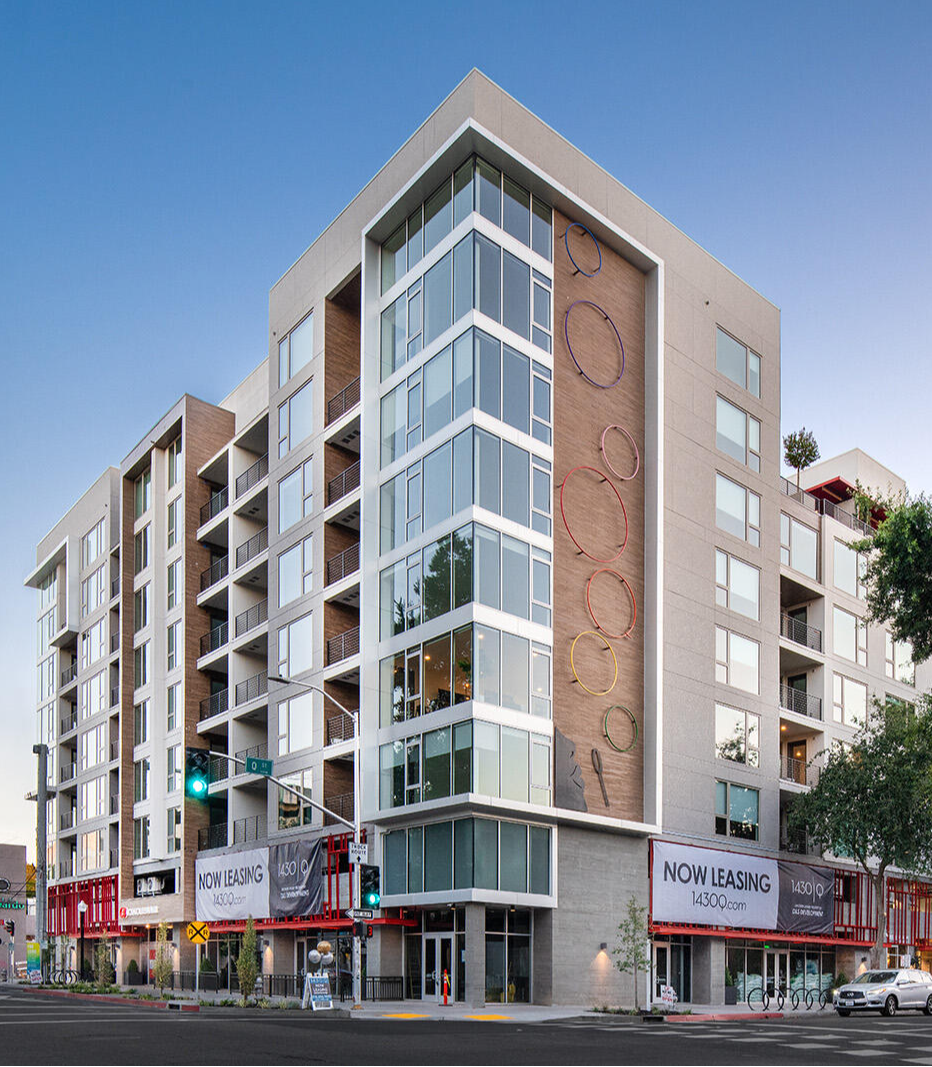
Accelerator Cities Program
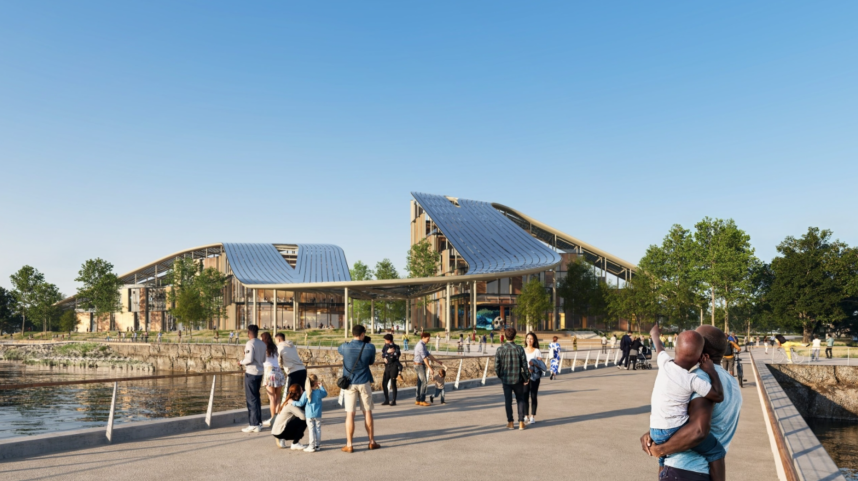
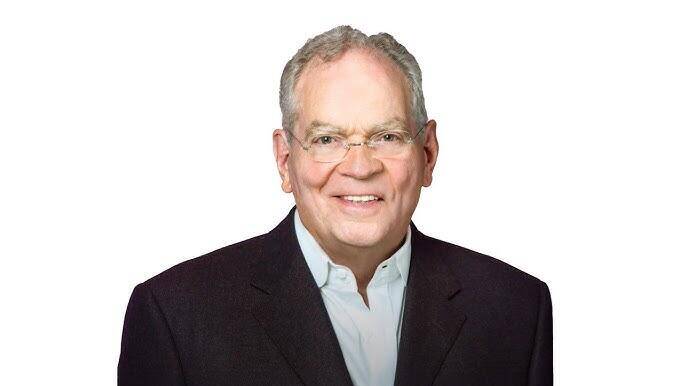
Hear From Industry Leaders
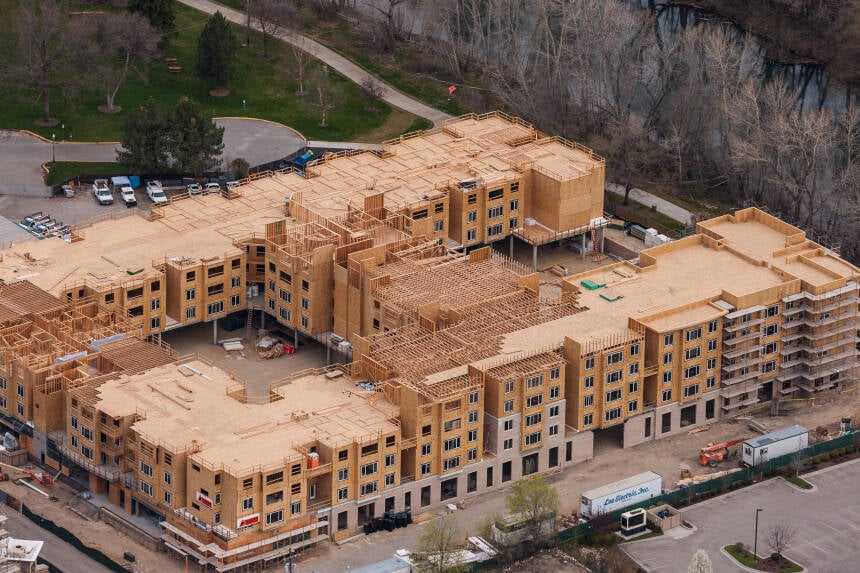
Light-Frame Education & Support
Jump to these stories.
Want to read more SLB stories?
California College of Arts | Studio Gang |
Photo Credit: Jason O’Rear
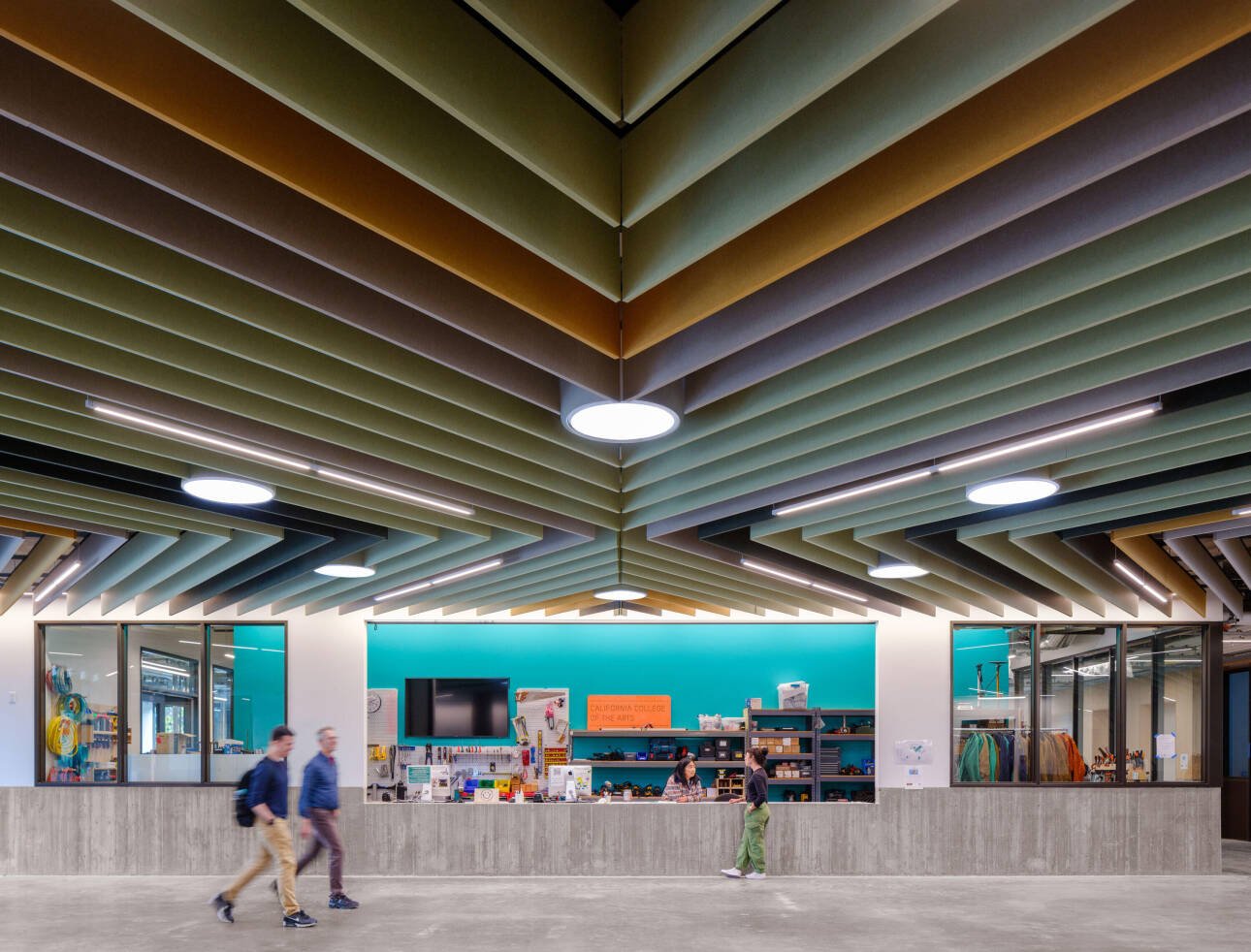

Two faculty development workshops this spring, funded by the SLB and U.S. Endowment for Forestry and Communities, equipped 51 professors from 46 universities across 25 states with new tools to advance wood design education in architecture and engineering programs.
While architecture students have multiple opportunities to explore wood’s potential through SLB-backed design competitions and studio sponsorships, engineering programs have been harder to reach due to heavy course loads and theory-focused curricula.

for Timber Education

Architecture students across the Pacific Northwest recently explored full-scale mass timber buildings—without leaving campus.
SLB Education Faculty Workshop |
Photo Credit: Leers Weinzapfel Associates
Brad Thorlakson
Former SLB Board of Directors Executive Chairman,
Tolko Industries
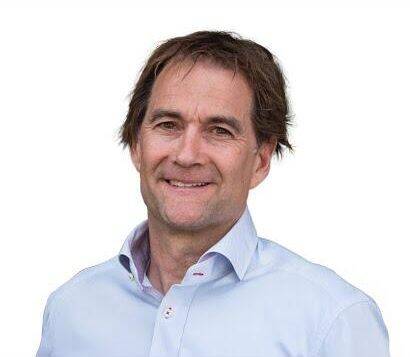
Jérôme Pelletier
First Vice Chair,
SLB Board of Directors
Vice President, Sawmill Division, J.D. Irving
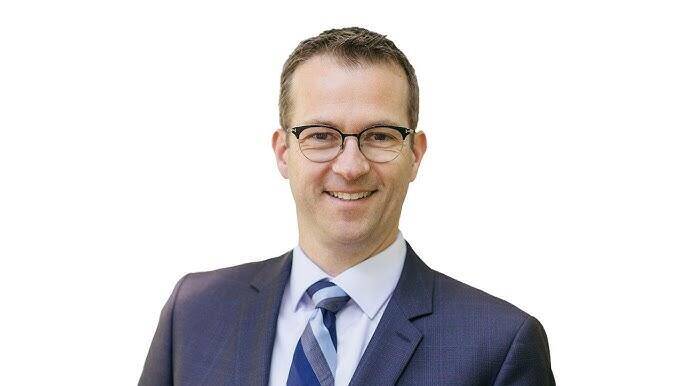
Caroline Dauzat
Chair Emeritus,
SLB Board of Directors
Owner, Rex Lumber
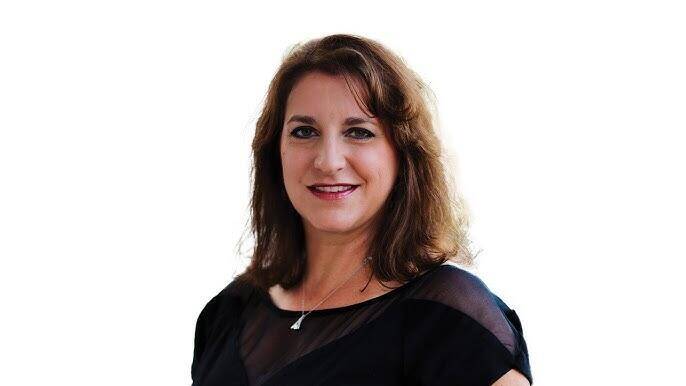
Marc Brinkmeyer
Chair Emeritus,
SLB Board of Directors
Owner, Idaho Forest Group
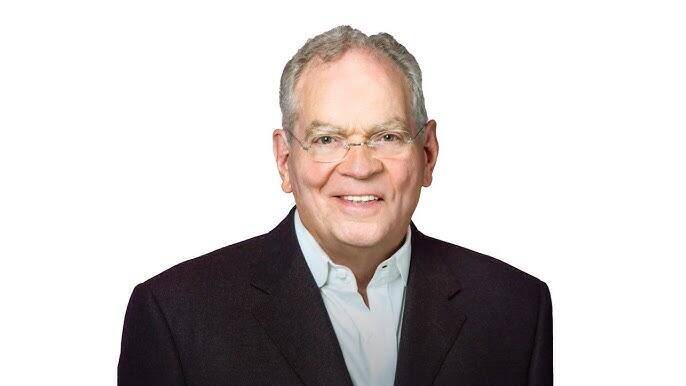
Marc Brinkmeyer, Chair Emeritus, SLB Board
of Directors, Owner, Idaho Forest Group
It's through the Softwood Lumber Board that we've had the opportunity to have a combined marketing effort of all of our species from a building component perspective. The cost of building is still too high. As we look at what automation, creativity, and AI will be able to bring us in the future, all of those things can manifest themselves through the Softwood Lumber Board, the AWC, Woodworks, Think Wood and our Education arm.
The Softwood Lumber Board is our future.




SLB investors across the country are working together to help protect and grow markets for lumber. Hear from leaders in every region about why continued investment in the SLB matters—and how a unified industry
voice is driving real impact in education, codes, and market development.
Find more on the SLB’s Why It Works page.
42XX Marina del Ray | RIOS |
Photo Credit: Pavel Bendov | ArchExplorer
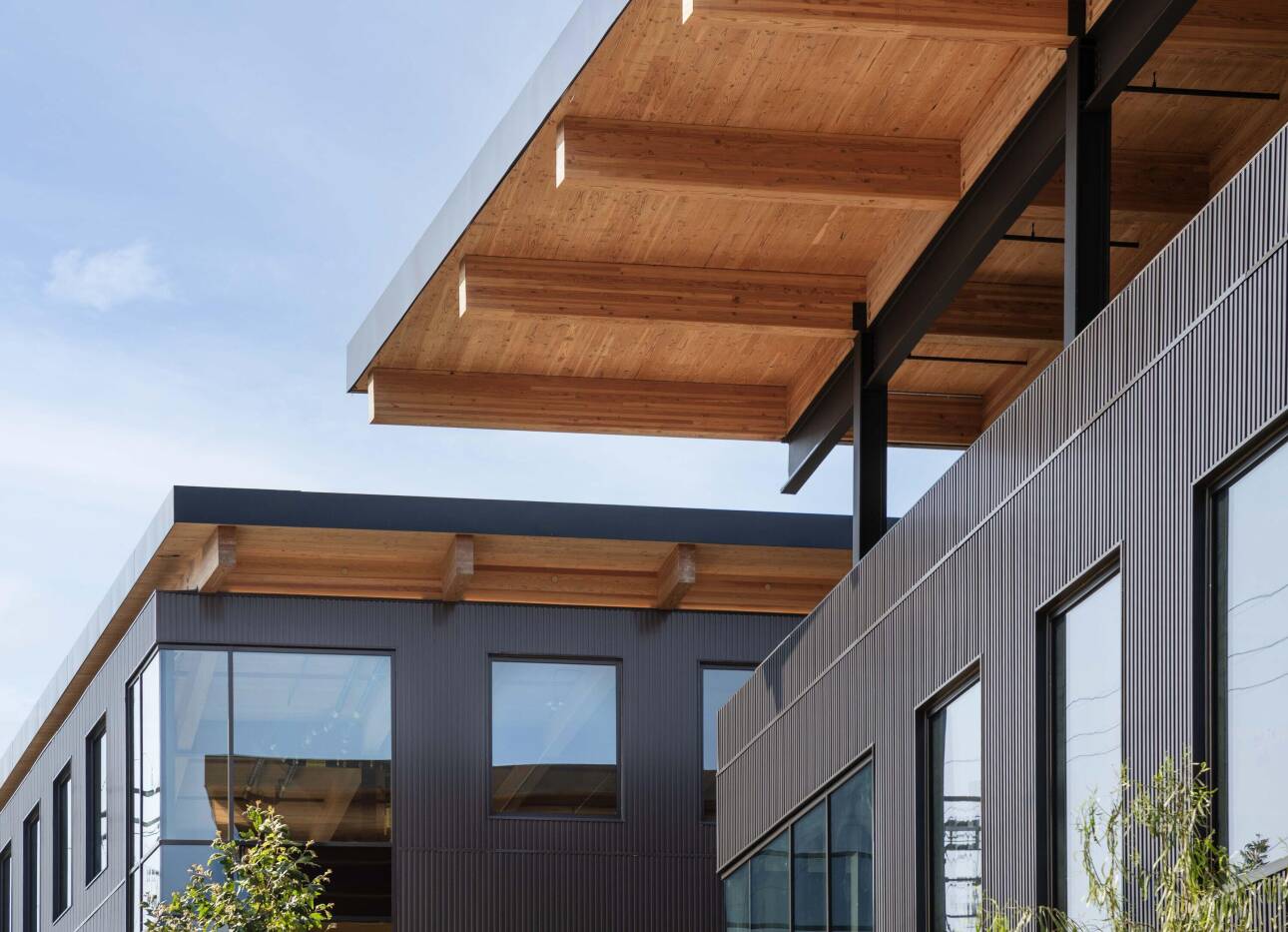
A national engineering firm’s upload of 12 wood projects to WIN—
all completed without direct support—offers clear proof that the WoodWorks strategy to scale demand is working.


Student housing continues to be a growth area for wood construction, with groups like Urban Land Institute and
Dodge forecasting a strong year for the segment.

Nine projects demonstrating the versatility and repeatability of wood design across a range of building types took top honors at the 2025
Wood in Architecture (WiA) Awards, announced at this year’s AIA Conference on Architecture.
in Award-Winning Projects
42XX Marina del Ray | RIOS |
Photo Credit: Pavel Bendov | ArchExplorer
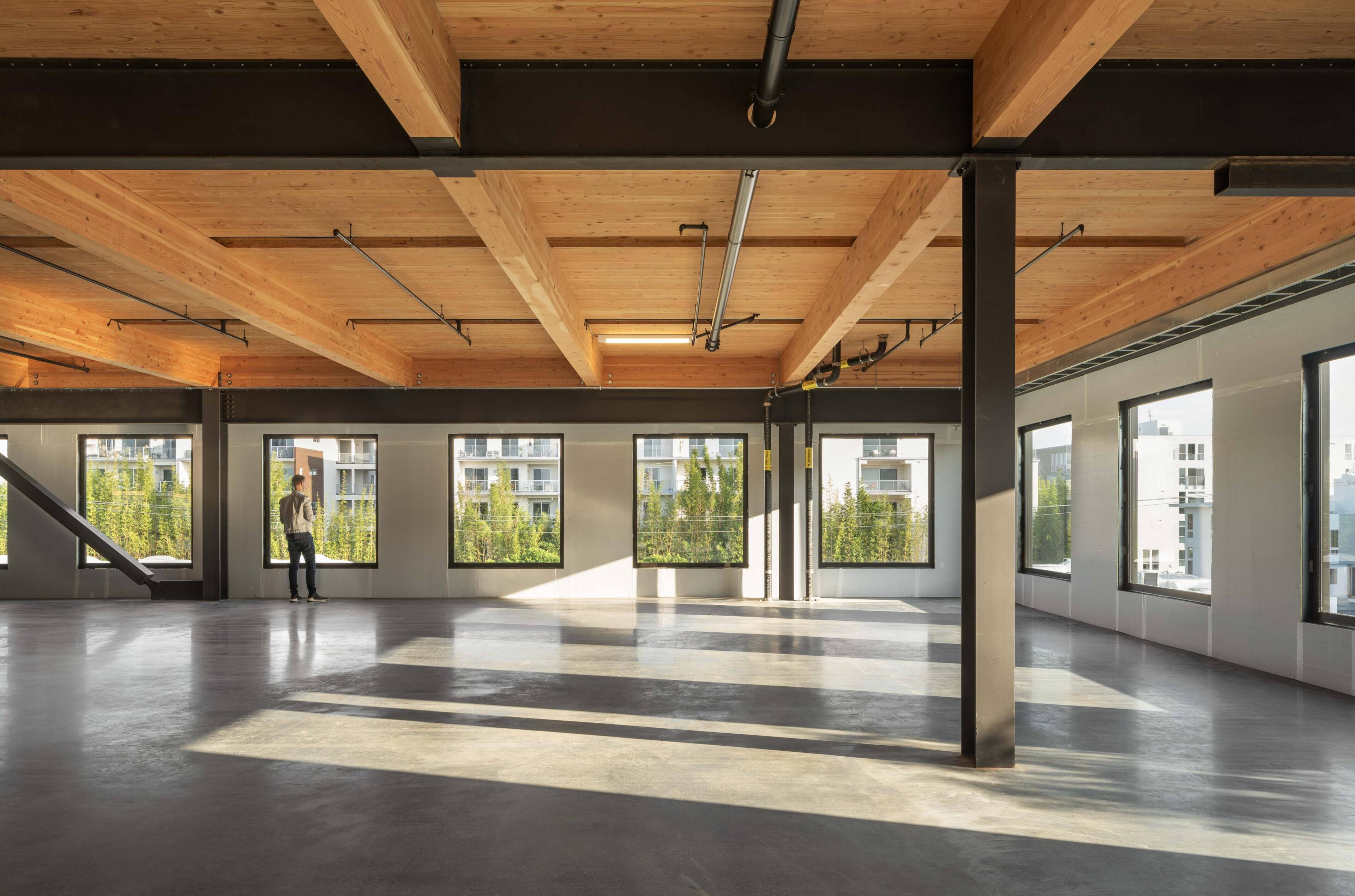
Rivers Edge Apartments | Kitchen & Associates, KPFF, McAlvain Construction.
Photo Credit: Idaho Airships
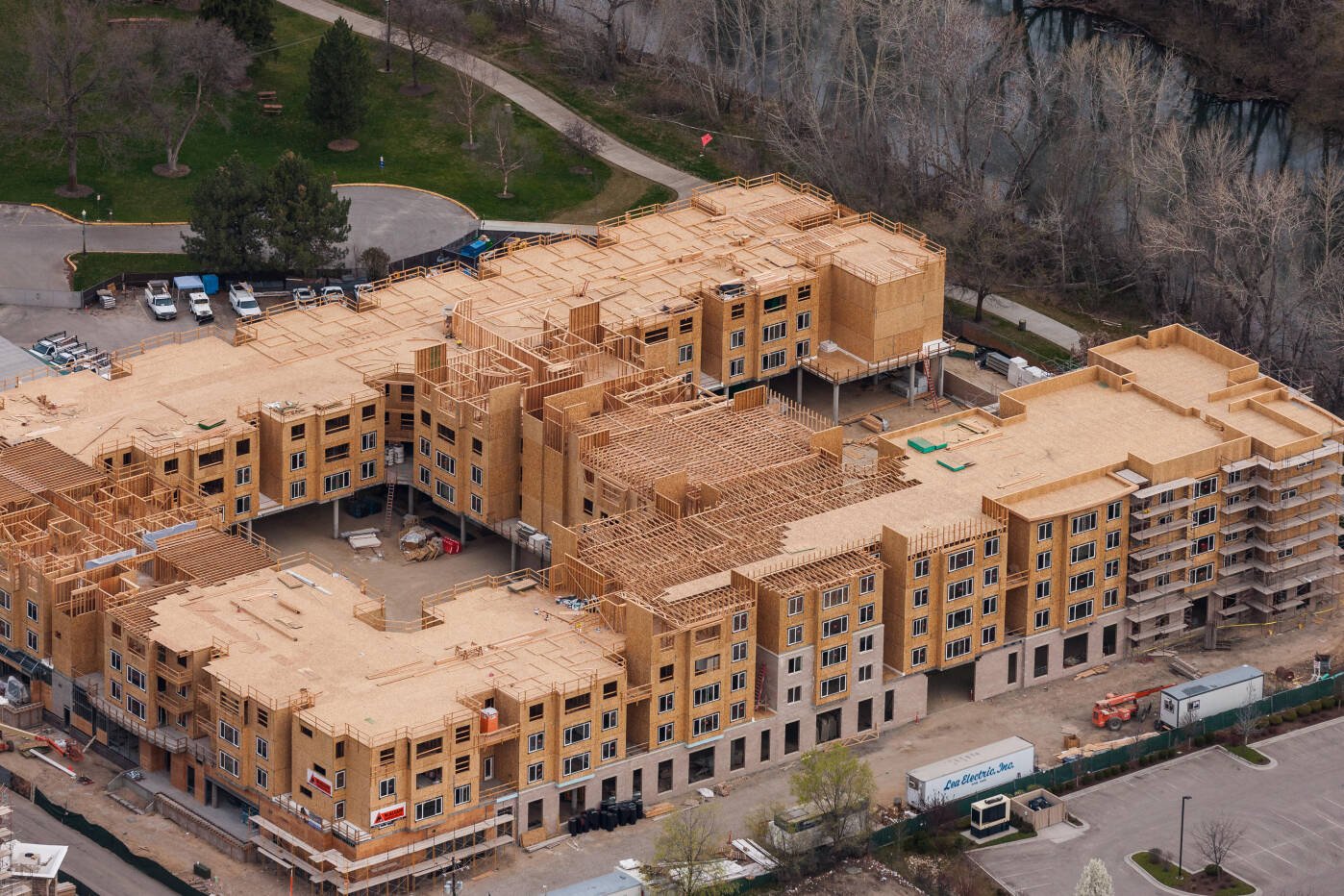
Light-frame construction remains a go-to solution for mid-rise buildings—and one of the most common project types supported by WoodWorks.
Over the past six years, 74% of WoodWorks-assisted projects have used light-frame systems, with 67% of reported Q2 projects falling into this category.
WoodWorks continues to meet demand with technical support, project guidance, and targeted education. Its recent three-part webinar series focused on key topics for larger and taller light-frame buildings: unit layout efficiency, exterior wall engineering, and high-performance envelopes.
The sessions drew 6,240 participants, with strong engagement from both architects and engineers.
Online interest tells a similar story: 70% of the 20 most-viewed expert tip articles on the WoodWorks website focus on light-frame wood, generating more than 96,000 views in the past year. As more teams explore the value propositions of lumber, demand for trusted guidance continues to position WoodWorks as a leading resource for light-frame solutions.
Africatown Plaza | David Baker Architects + GGLO |
Photo Credit: Bruce Damonte
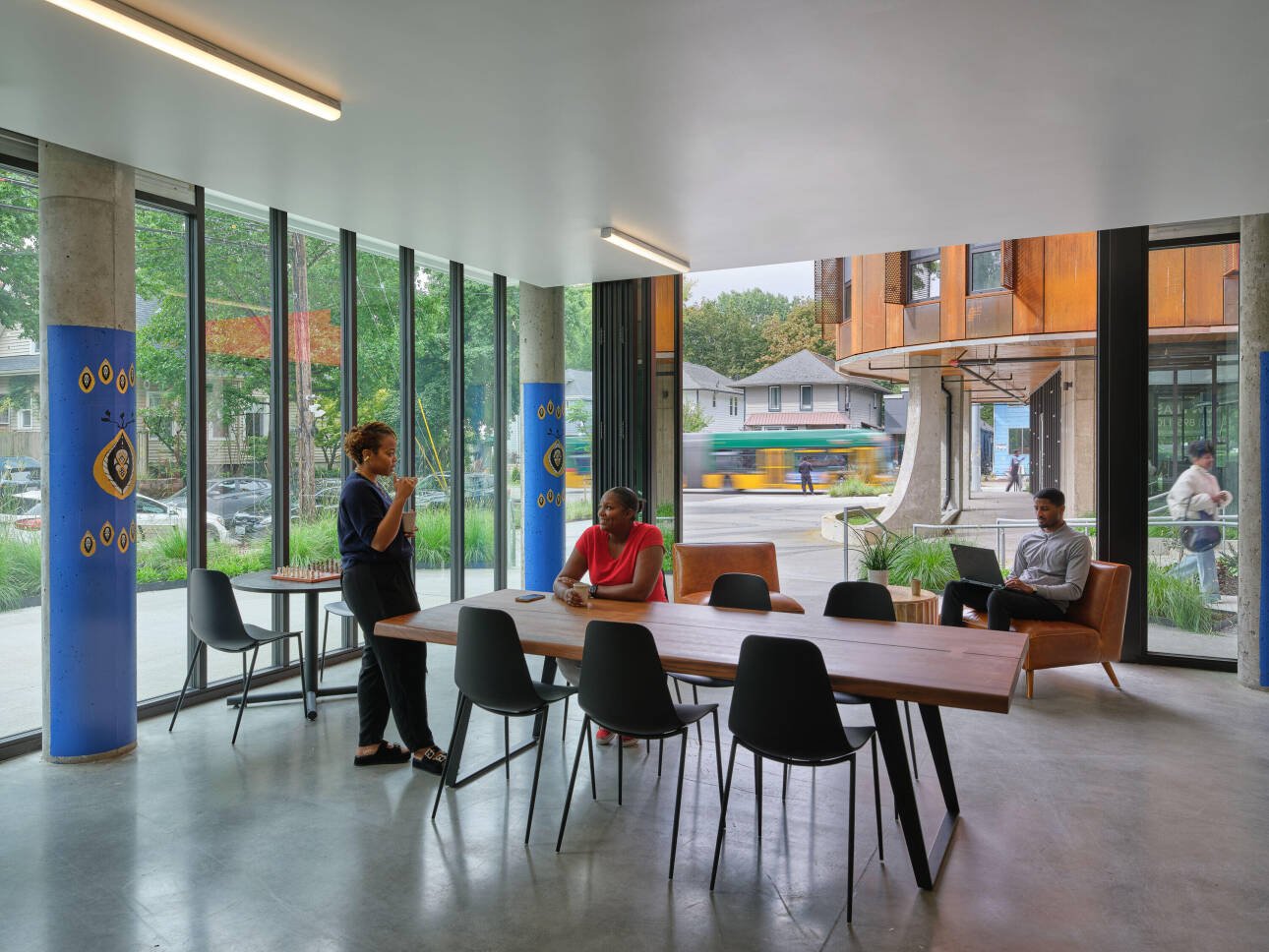
A recent Think Wood case study highlights the value and affordability of light-frame construction through Africatown Plaza, a seven-story, 126-unit affordable housing project in Seattle designed by David Baker Architects and GGLO.


Think Wood’s annual Intent to Specify survey shows that campaign engagement continues to influence how likely users are to specify wood structural systems.

Mass timber can help office projects stand out in a competitive leasing market—an attribute demonstrated by two recent Think Wood case studies.
That Stand Out
Africatown Plaza | David Baker Architects + GGLO |
Photo Credit: Bruce Damonte

The New York Climate Exchange’s Climate Hub on Governors Island
was selected for the second cohort of the NYC Mass Timber Studio.
Rendering Credit: New York City Mass Timber Studio | Skidmore, Owings & Merrill
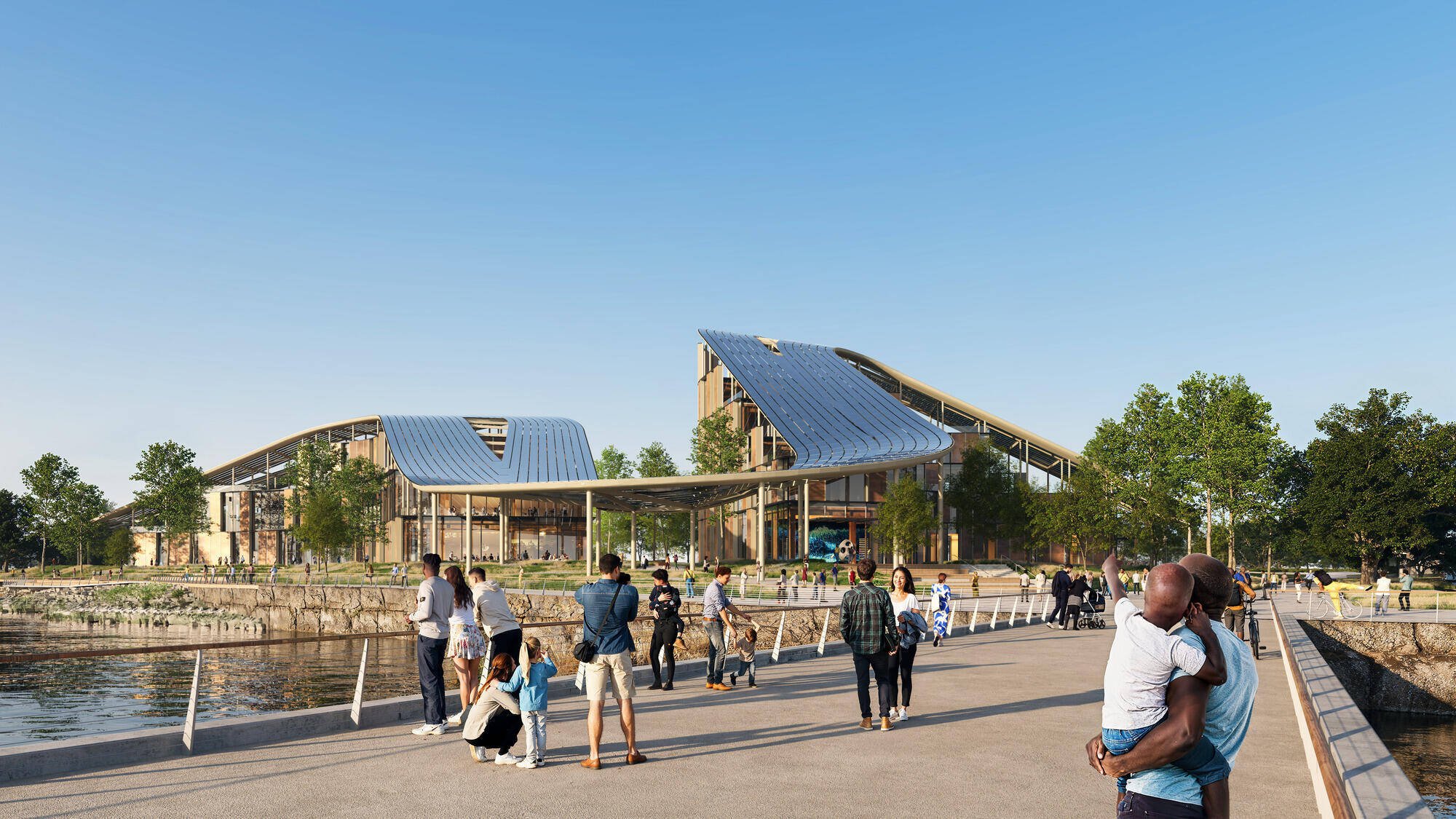
The Georgia Mass Timber Accelerator is reviewing applications for a second of supported projects as it partners with WoodWorks to support three projects selected in round one. The program has expanded into new urban centers through Mass Timber Hubs—educational events developed in partnership with WoodWorks to engage local design and construction professionals. Following events earlier this year in Columbus, Savannah, Athens, and Macon, an Atlanta event is scheduled for November 6.
By positioning lumber-based structural systems as a key solution for sustainable, scalable, and affordable development across the United States, the SLB’s Accelerator Cities program is laying the groundwork for broader adoption of wood construction in key markets, helping to drive demand for lumber and grow market share in multifamily and nonresidential construction.
The SLB’s Accelerator Cities program advances innovation in wood design and construction by connecting local officials, federal agencies, non-profits, and building professionals. In Q2, the SLB secured additional funding for the program from the U.S. Endowment for Forestry and Communities, which has pledged $250,000, joining the USDA Forest Service’s $1 million investment and the SLB’s $500,000. The SLB is expecting to announce collaborations with several new cities in both 2025 and 2026.
These upcoming programs build on $1 million in investments (leveraging $200,000 from the SLB) in approved and active accelerators in Boston, New York City, and Georgia that have directly supported 34 innovative wood projects.
The SLB-supported accelerators in New York City and Georgia reported major progress in Q2. The NYC Mass Timber Studio announced a second cohort of selected projects in August to help catalyze deployment of wood construction throughout New York City. Two of the most ambitious projects are the New York Climate Exchange, projected to be the largest mass timber commercial project in New York City, totaling more than 140,000 square feet, and Stapleton B4/B5 Residential, announced in May, which includes 500 affordable and market rate homes.
Children's Day School | Jensen Architects |
Photo Credit: Bruce Damonte
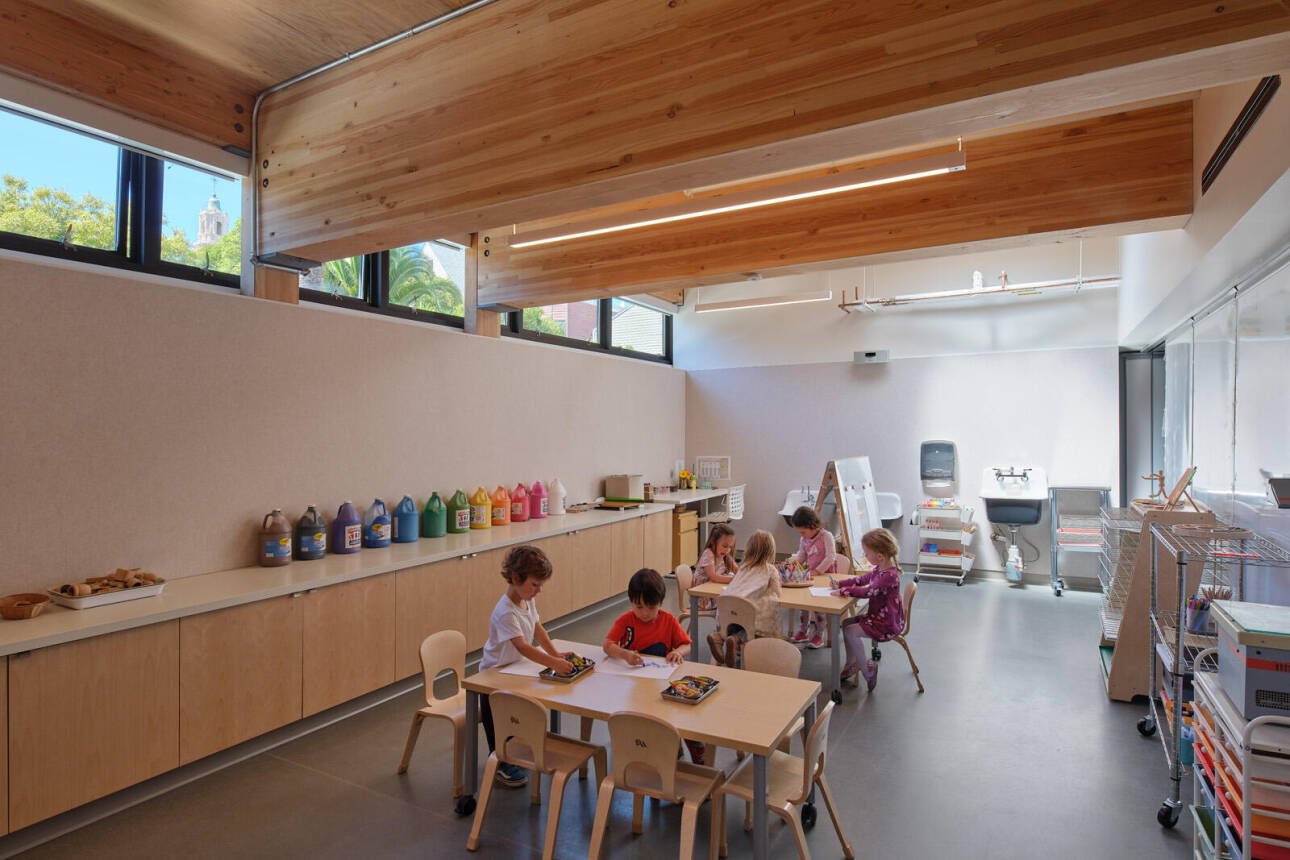

To help the sector speak with clarity and consistency on complex wildfire topics, the AWC and Working Forests Initiative have released a new wildfire messaging guide.
To help building officials permit mass timber projects in jurisdictions that have not yet adopted the latest code provisions, the AWC has released a new National Mass Timber Alternative Materials and Methods (AMM) Guide.


Building codes quietly shape the future of construction. They determine which materials are allowed, how they are used, and whether design and construction professionals can choose lumber with confidence.

Children's Day School | Jensen Architects |
Photo Credit: Bruce Damonte
If you have any questions about any SLB reports, please email info@softwoodlumberboard.org.
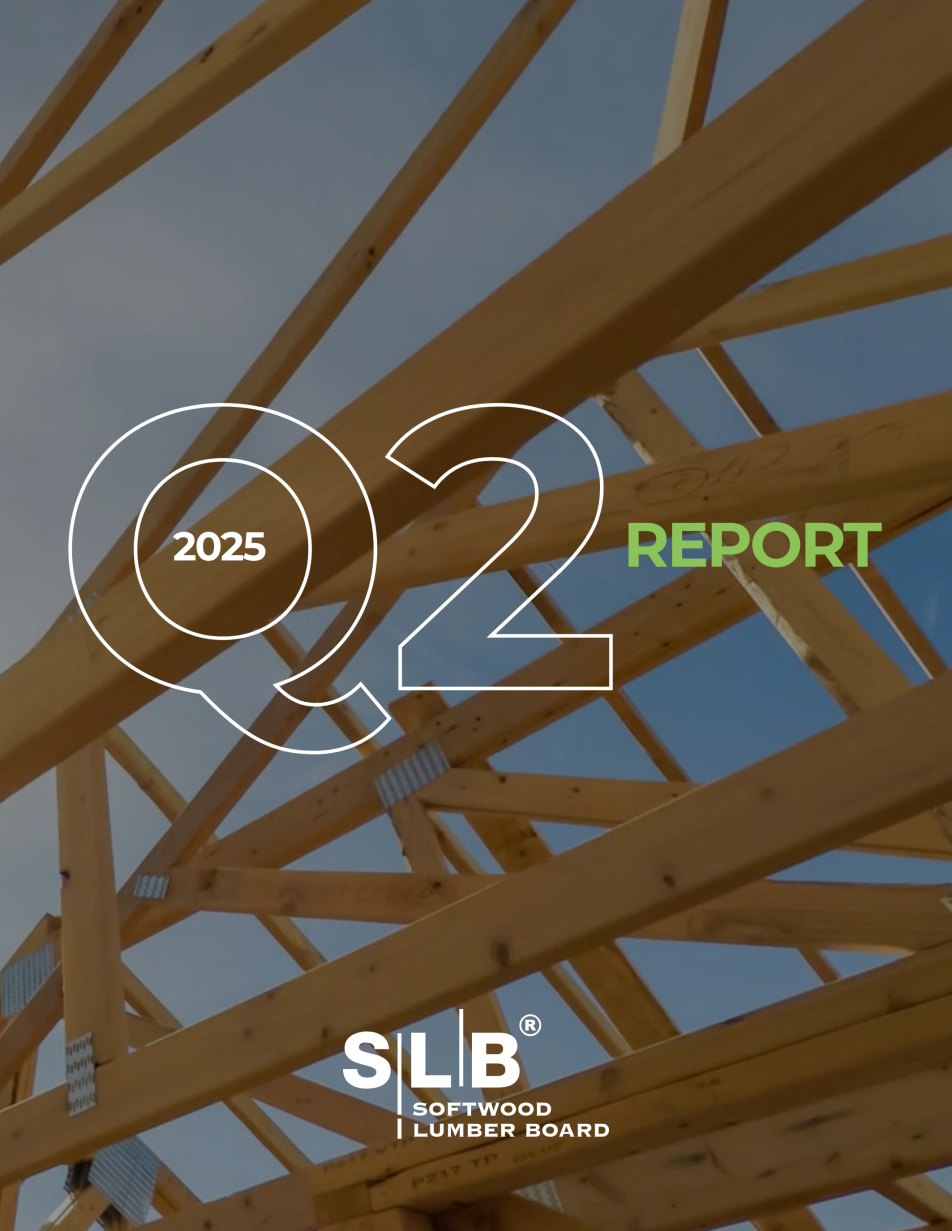

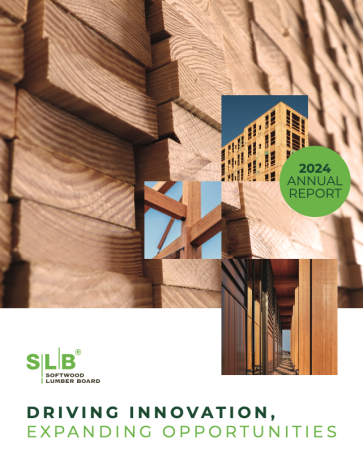
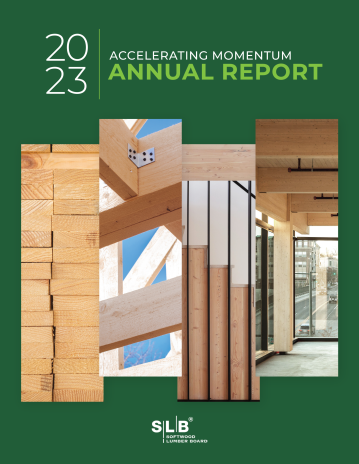
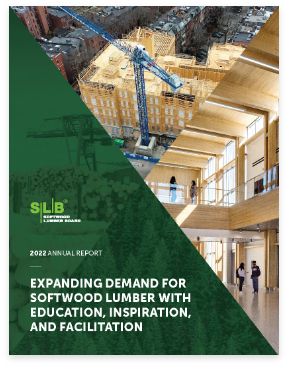




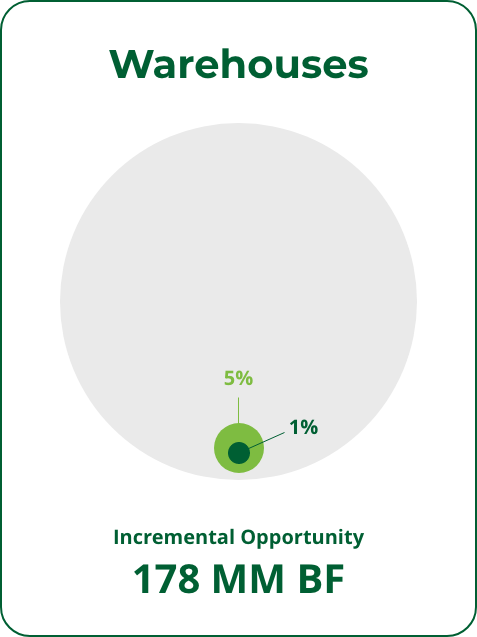
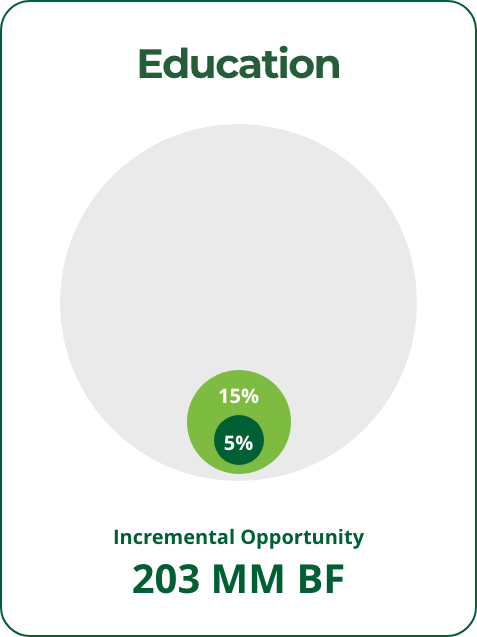

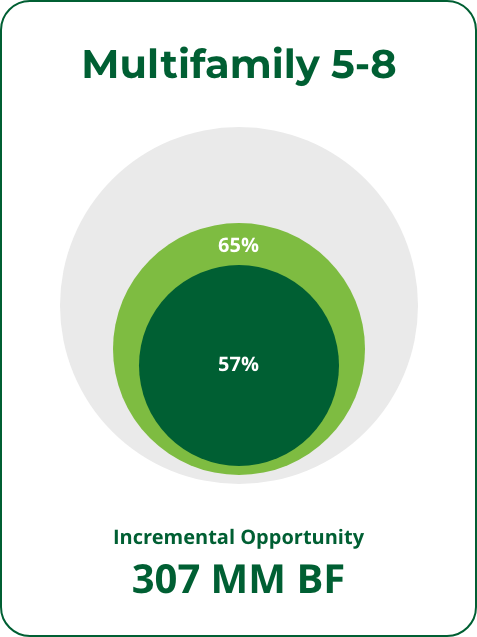
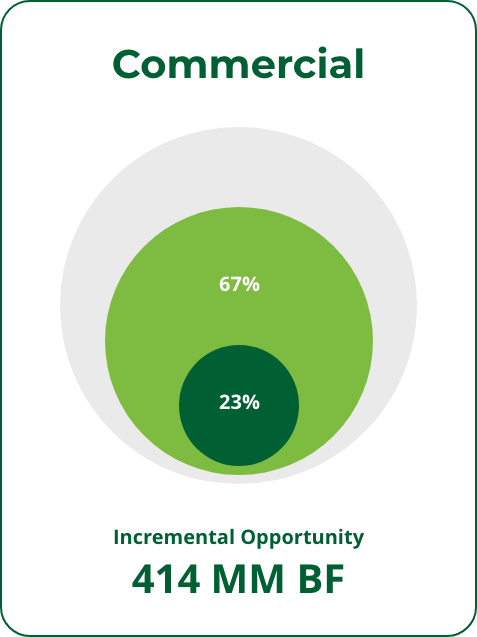
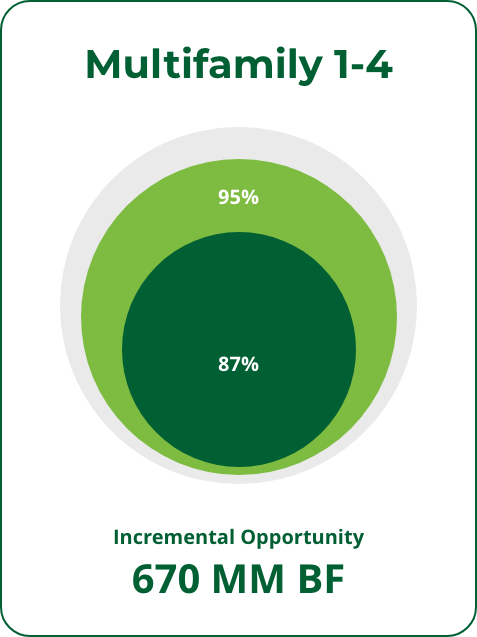
& Mass Timber



the 1,510 MM BF
2025 goal.


Q2 HIGHLIGHTS
SF
Building Segment Priorities
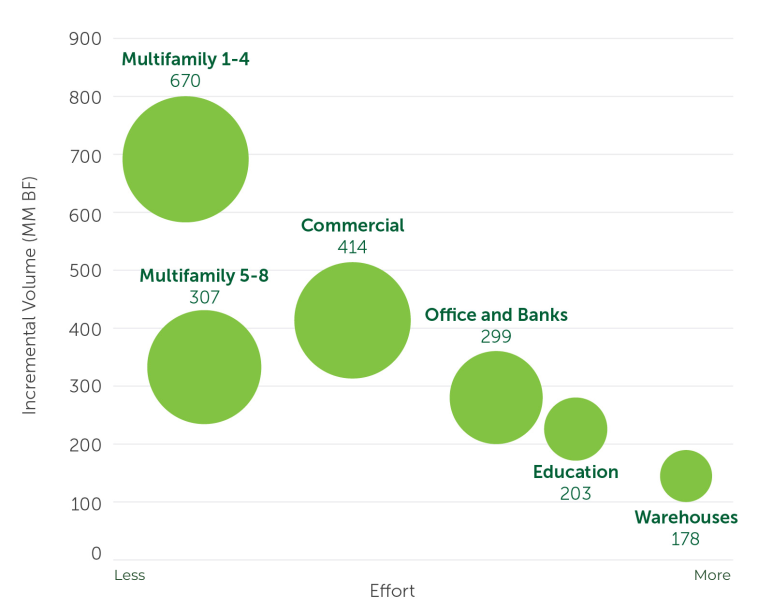
Accelerator Cities Program
Want to read more SLB stories?
Jump to these stories.
Light-Frame Education & Support
Hear from Industry Leaders
Projects such as the eight-story 1430 Q in Sacramento show that
light-frame construction has the potential to reach new heights.
Photo Credit: Greg Folkins Photography
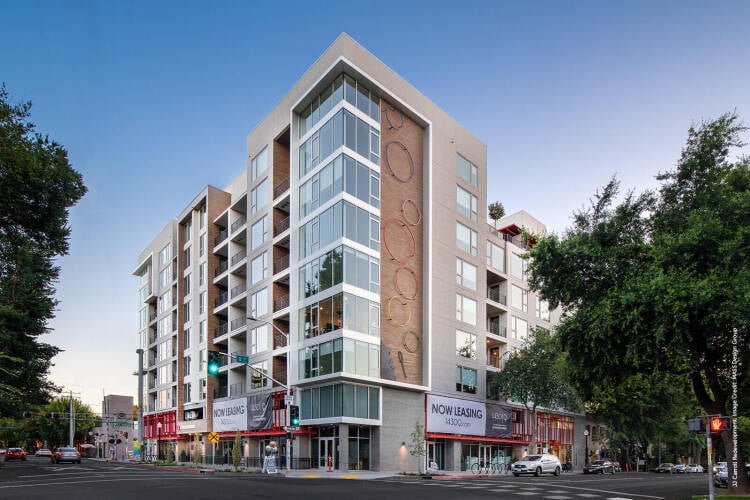
Since 2012, the SLB has helped generate more than 16 billion board feet (BBF) of incremental lumber demand, returning 86 board feet for every dollar invested. Analysis shows that without the SLB’s efforts, softwood lumber
use in the U.S. would have been 3.5% lower.
Now, with diversification in broader construction markets and growing demand for environmentally responsible building materials, the SLB has outlined a focused strategy to add 2.9 BBF in new annual lumber demand by 2035. The approach builds on existing momentum in key, high-growth market segments—multifamily, affordable housing, education, offices, and warehouses—where lumber offers strong economic and environmental value propositions.
The SLB’s plan sets realistic growth targets in market share within segments where gains are achievable at the current level of investment. The focus is on execution: maintaining what works, adapting to new opportunities, and delivering measurable demand growth.
At the same time, the SLB’s strategy recognizes and addresses intensifying competition from other building materials, whose campaigns are challenging lumber’s benefits and seeking to influence upcoming building code cycles. The SLB’s funded programs—including WoodWorks, the AWC, Think Wood, and SLB Education—are responding with coordinated efforts to strengthen technical support, defend and accelerate adoption of building codes, and improve awareness of wood’s environmental, economic, and performance advantages.
In a contested materials landscape, the SLB’s next-phase strategy presents a clear and data-driven path to sustained market protection, diversification, and growth.
SLB Education Faculty Workshop |
Photo Credit: Leers Weinzapfel Associates
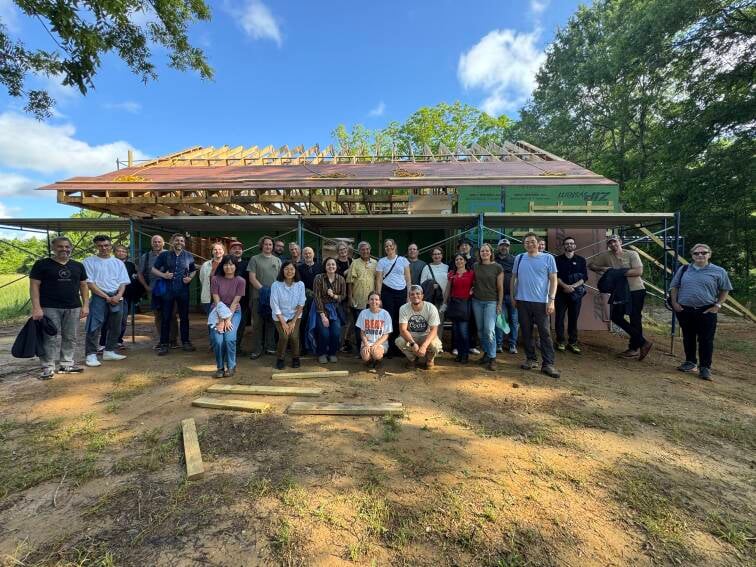

Tool Brings Construction Sites
to the Classroom

for Timber Education

Caroline Dauzat
Chair Emeritus,
SLB Board of Directors
Owner, Rex Lumber

Jérôme Pelletier
First Vice Chair,
SLB Board of Directors
Vice President, Sawmill Division, J.D. Irving

Marc Brinkmeyer
Chair Emeritus,
SLB Board of Directors
Owner, Idaho Forest Group


Brad Thorlakson
Former SLB Board of Directors Executive Chairman,
Tolko Industries
the SLB Investors
SLB investors across the country are working together to help protect and grow markets for lumber. Hear from leaders in every region about why continued investment in the SLB matters—and how a unified industry
voice is driving real impact in education, codes, and market development.
Find more on the SLB’s Why It Works page.
to Drive
the Industry Forward
42XX Marina del Ray | RIOS | Photo Credit: Pavel Bendov | ArchExplorer




Rivers Edge Apartments | Kitchen & Associates, KPFF, McAlvain Construction. Photo Credit: Idaho Airships
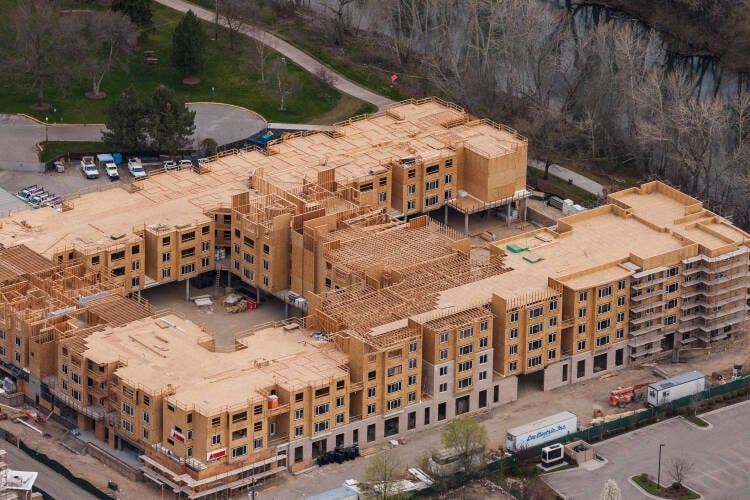
Light-frame construction remains a go-to solution for mid-rise buildings—and one of the most common project types supported by WoodWorks. Over the past six years, 74% of WoodWorks-assisted projects have used light-frame systems, with 67% of reported Q2 projects falling into this category.
WoodWorks continues to meet demand with technical support, project guidance, and targeted education. Its recent three-part webinar series focused on key topics for larger and taller light-frame buildings: unit layout efficiency, exterior wall engineering, and high-performance envelopes. The sessions drew 6,240 participants, with strong engagement from both architects and engineers.
Online interest tells a similar story: 70% of the 20 most-viewed expert tip articles on the WoodWorks website focus on light-frame wood, generating more than 96,000 views in the past year. As more teams explore the value propositions of lumber, demand for trusted guidance continues to position WoodWorks as a leading resource for light-frame solutions.
Wood Education
and Support
Africatown Plaza | David Baker Architects + GGLO |
Photo Credit: Bruce Damonte

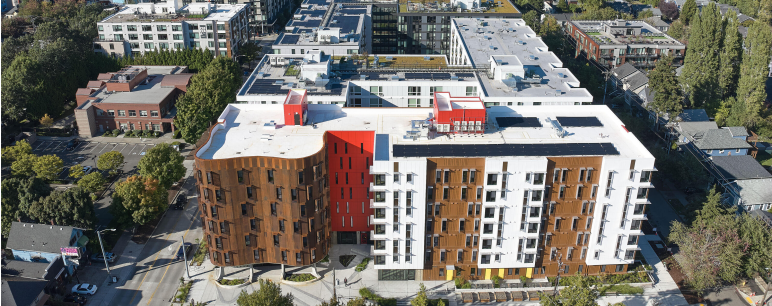



and single-family home design and build resources to architects, developers, and contractors.
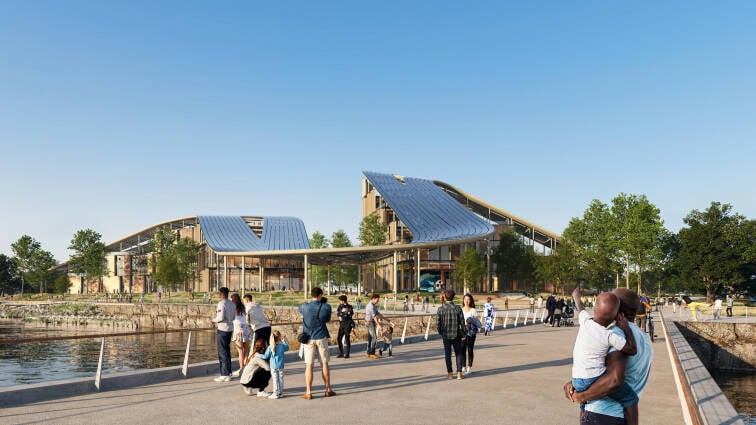
The SLB’s Accelerator Cities program advances innovation in wood design and construction by connecting local officials, federal agencies, non-profits, and building professionals. In Q2, the SLB secured additional funding for the program from the U.S. Endowment for Forestry and Communities, which has pledged $250,000, joining the USDA Forest Service’s $1 million investment and the SLB’s $500,000. The SLB is expecting to announce collaborations with several new cities in both 2025 and 2026.
These upcoming programs build on $1 million in investments (leveraging $200,000 from the SLB) in approved and active accelerators in Boston, New York City, and Georgia that have directly supported 34 innovative wood projects.
The SLB-supported accelerators in New York City and Georgia reported major progress in Q2. The NYC Mass Timber Studio announced a second cohort of selected projects in August to help catalyze deployment of wood construction throughout New York City. Two of the most ambitious projects are the New York Climate Exchange, projected to be the largest mass timber commercial project in New York City, totaling more than 140,000 square feet, and Stapleton B4/B5 Residential, announced in May, which includes 500 affordable and market rate homes.
The Georgia Mass Timber Accelerator is reviewing applications for a second of supported projects as it partners with WoodWorks to support three projects selected in round one. The program has expanded into new urban centers through Mass Timber Hubs—educational events developed in partnership with WoodWorks to engage local design and construction professionals. Following events earlier this year in Columbus, Savannah, Athens, and Macon, an Atlanta event is scheduled for November 6.
By positioning lumber-based structural systems as a key solution for sustainable, scalable, and affordable development across the United States, the SLB’s Accelerator Cities program is laying the groundwork for broader adoption of wood construction in key markets, helping to drive demand for lumber and grow market share in multifamily and nonresidential construction.
The New York Climate Exchange’s Climate Hub on Governors Island was selected for the second cohort of the NYC Mass Timber Studio. Rendering Credit: New York City Mass Timber Studio | Skidmore, Owings & Merrill
for Lumber in High-Opportunity Markets

Children's Day School | Jensen Architects | Photo Credit: Bruce Damonte
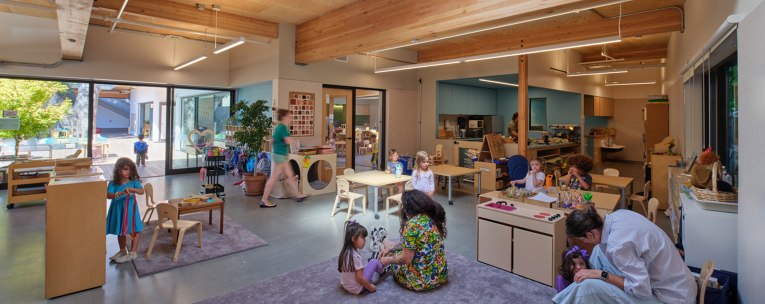

2027 Codes


of the Impact of the SLB
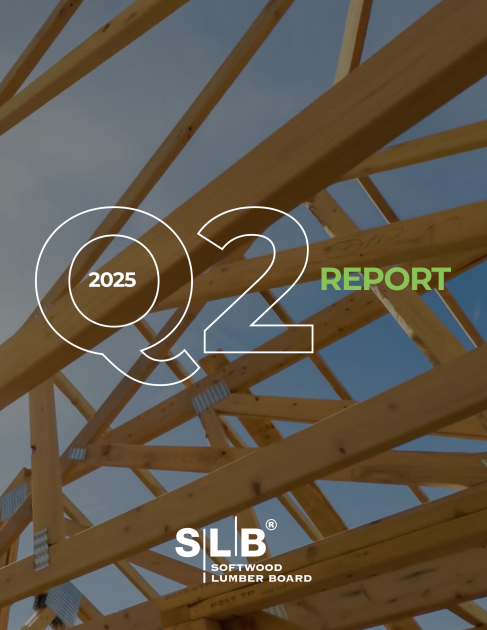
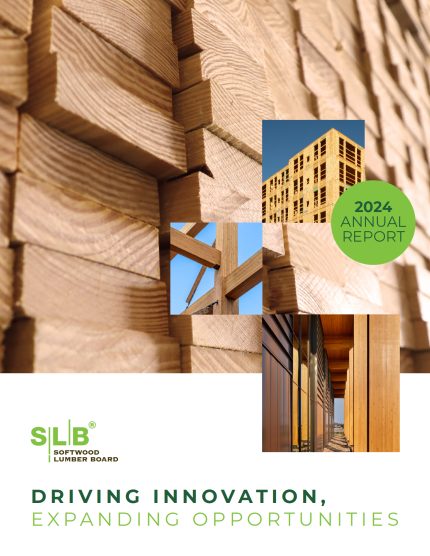
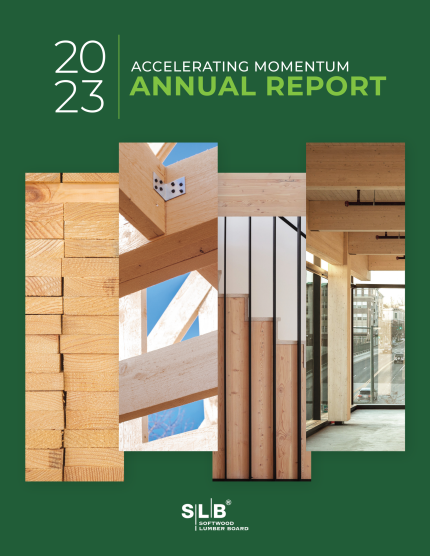
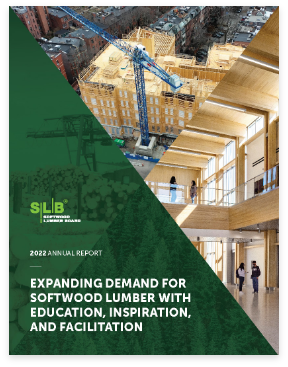


If you have any questions about any SLB reports, please email info@softwoodlumberboard.org.

